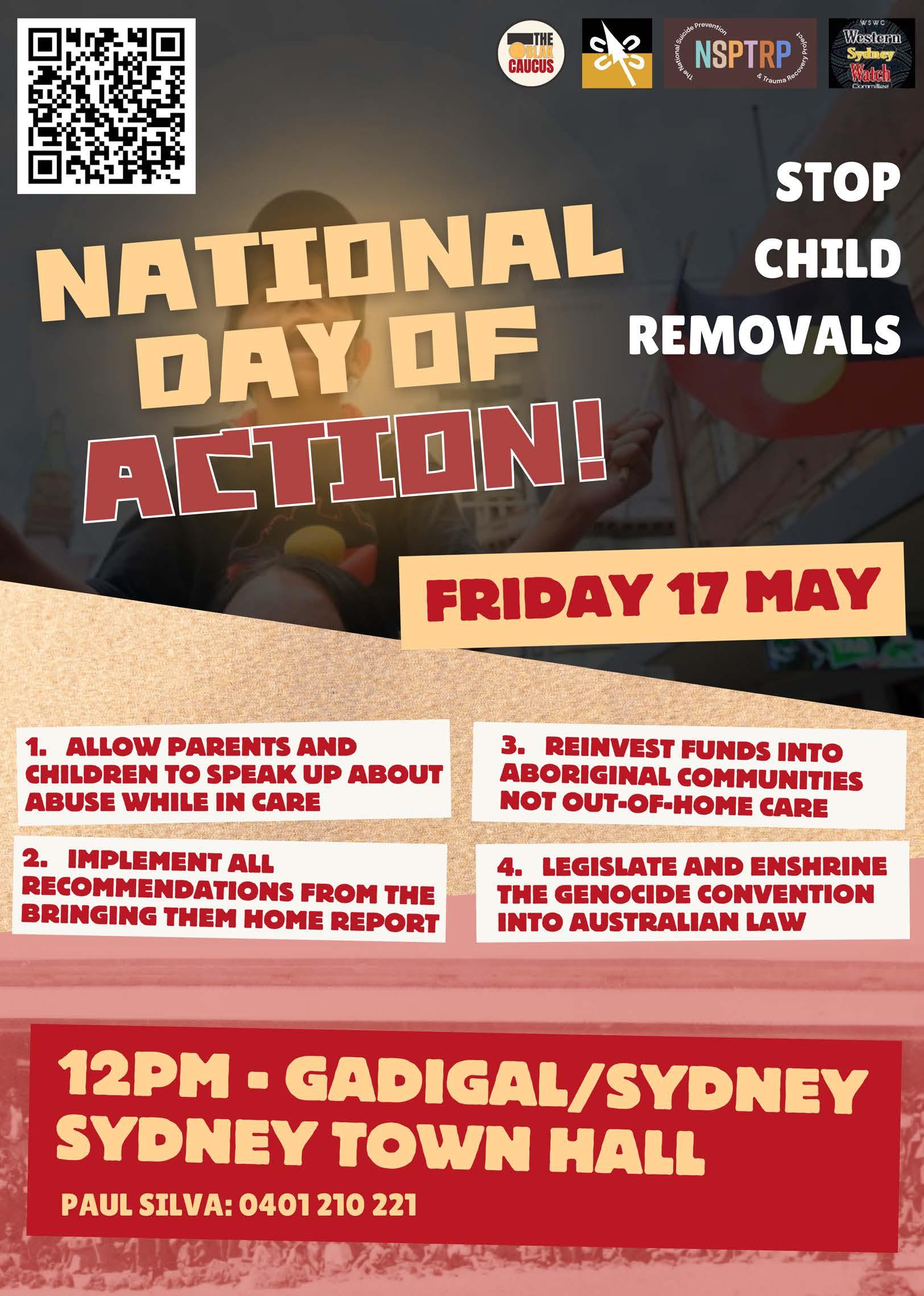
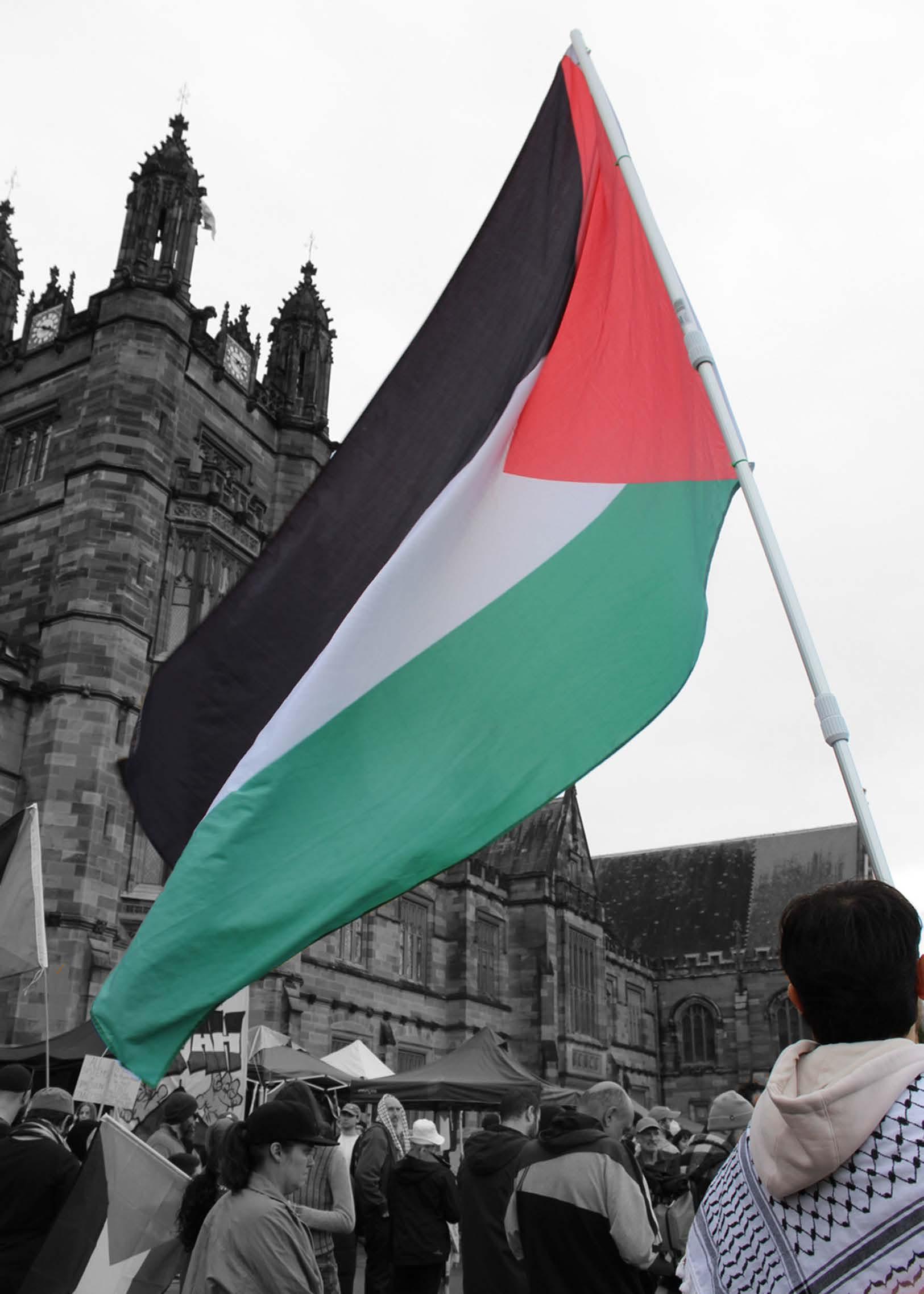





Honi Soit is produced, published and distributed on the stolen land of the Gadigal people of the Eora Nation. Sovereignty was never ceded. For over 235 years, First Nations peoples in so-called ‘Australia’ have continued to suffer under the destructive effects of invasion, genocide, and colonisation. As editors of this paper, we acknowledge that we are each living, writing, and working on stolen Gadigal, Wangal and Bidjigal land, and are beneficiaries of ongoing colonial dispossession.
USU Board results are out!!!!!!!!!
What’s up with the RAP?
Parliament debates fair fares
Law School be Ju-lying about intensives
Woeful payment for placements
The Honi seer predicts Budget
HP boycott underway
No rain deters the encampment Day 19 at the Gaza Solidarity Encampment
Gaza Solidarity Encampment timeline
Finding folklore in Iceland
Breaking the fourth dimension
WhatsAPP, Meta?
Interviews with First Nations Response
Friends of the Land
Creative pieces... have a gander Teaching, writing, Parramatta Park
Authorised by Australien Government Reviews reviews reviews SRC time!
Puzzling and laughing
Editors
Valerie Chidiac, Aidan Elwig Pollock, Victoria Gillespie, Ariana Haghighi, Sandra Kallarakkal, Zeina Khochaiche, Simone Maddison, Angus McGregor, Amelia Raines
Contributors
Anonymous, Clancy Gleeson, Dandoush Kafina, Ethan Lyons, Hilary Sutano, Iris Brown, Lotte Weber, Mehnaaz Hossain, Mihir Sardana, Peter Lavilles, Rand, Sophia Markham, Will Thorpe
Artists/Photographers
Anonymous, Deepika Jain, Ishbel Dunsmore, Nidula Fonseka, Rand, Soph Li Rong Tan
Cover
Valerie Chidiac
We acknowledge that the University of Sydney is an inherently colonial institution which is not only physically built on stolen land, but also ideologically upholds a devaluing of Indigenous systems of knowledge and systematically excludes First Nations peoples. We recognise our complicity in such systems. We strive to remain conscious of, and actively resist and unlearn, colonial ideologies and biases, both our own and those perpetuated by the University and other institutions like it.
As a student newspaper, we pledge to stand in solidarity with both First Nations movements and all Indigenous struggles toward decolonisation worldwide, endeavouring to platform Indigenous voices. Honi is committed to countering the exclusion, censoring, and silencing of Aboriginal and Torres Strait Islander perspectives in mainstream media.
Always was, and always will be Aboriginal land.
Honi Soit editors
This week’s edition was intended to be Indigenous Honi. At the First Nations Collective’s last minute discretion, the pieces intended for the autonomous edition have been incorporated into this standard issue instead.
We would like to thank the Indigenous Honi contributors, whose work is showcased on pages 12–15.
Is there a world record for the quickest Honi laid up in its 95 years of life?
This here, in your hands, may be just that.
Central to the edition is the ongoing Gaza Solidarity Encampment. Although it may be passed absent-mindedly on your way to Courtyard — a historical reckoning of our time is sprawling over our previously, perfectly manicured Quad lawns.
There has not been a movement that has unified student activists around the world in recent memory. The term solidarity, often thrown around, has materialised in a concrete vision
Politics, however, is layered. Just as we find ourselves caught up in ‘history’ , regular events on campus like the USU Board elections or nationally like the upcoming Budget come and go.
Often activists ask people how they can stand by when evil happens all around them. Even at the height of the encampment where thousands rallied on the Quad last Sunday, most students did just walk by.
The question is how to get the rest.
There is no doubt that Palestine is the struggle of our time. Everyone has talked about the ‘ongoing situation in the Middle East’, even if they do not call it for what it is: a genocide.
This photograph was taken on Sunday May 12 when the thirty-first consecutive Palestine Action Group protest marched from Belmore Park to the USyd Gaza Solidarity Encampment. The encampment itself had entered its twentieth day. This photograph speaks for itself with the red, green, white and black at the forefront. Everywhere you looked, Palestine was hypervisible from the banners to the keffiyehs to the tents that occupy the Quad lawns until USyd discloses and divests from its ties to Israel.
Why is “Honi Soit” and “First printed in 1929” in Arabic you may ask? Well it’s not just for aesthetics, but given all the commentary surrounding the use of “intifada” and “from the river to the sea”, we thought it appropriate to express solidarity in Arabic. Many have felt all too comfortable explaining the semantics and we deemed it jarring to have our masthead look down from above in English — and Old French. For obvious reasons, “Honi Soit” had to be transcribed phonetically.
All eyes on Gaza. Hands off Rafah. May the time come when Palestine is liberated and everyone living in it is free and treated with dignity. Until then, the Palestinian flag will continue to fly.
ISSN: 2207-5593. This edition was published on Tuesday 14 May 2024. Disclaimer: Honi Soit is published by the Students’ Representative Council, University of Sydney, Level 1 Wentworth Building, City Road, University of Sydney NSW 2006. The SRC’s operation costs, space and administrative support are financed by the University of Sydney. Honi Soit is printed under the auspices of the SRC’s Directors of Student Publications (DSP): Dustin Dao, Jasmine Donnelly, Lia Perkins, Tiger Perkins, Victor Zhang, Lucinda Zheng. All expressions are published on the basis that they are not to be regarded as the opinions of the SRC unless specifically stated. The Council accepts no responsibility for the accuracy of any of the opinions or information contained within this newspaper, nor does it endorse any of the advertisements and insertions.
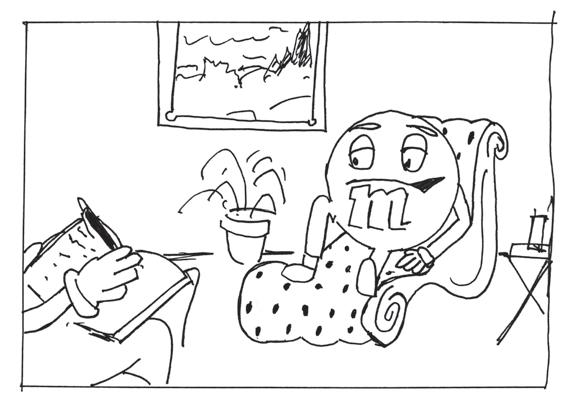
Submit your best caption for the above to editors@honisoit. com for a chance to WIN and be published in the next edition! Winners receive a personalised limerick from Angus McGregor.
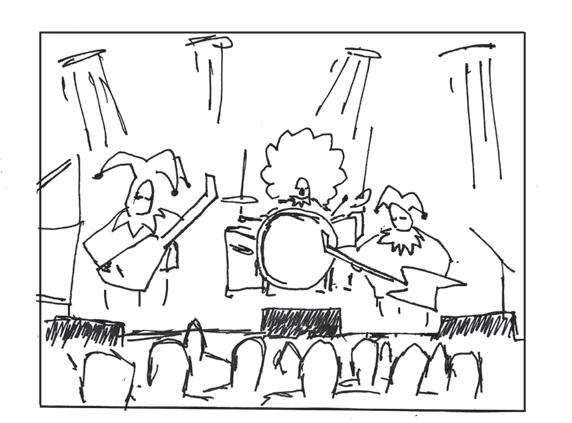
Winner: “Tell us a joke”
— Charlotte Saker
Spotted
A few of us Editors attended a certain NLS member’s 22nd birthday party this weekend. Stumbling drunkenly through the crowded hallway, something caught our attention — a welcome throwback to Welcome Week!
Winner’s reward: There once was a caption so bright, “Tell us a joke!” it did incite. Clowns on stage, a merry array, Playing music to brighten the day, Their laughter, the audience’s delight!
far from campus!
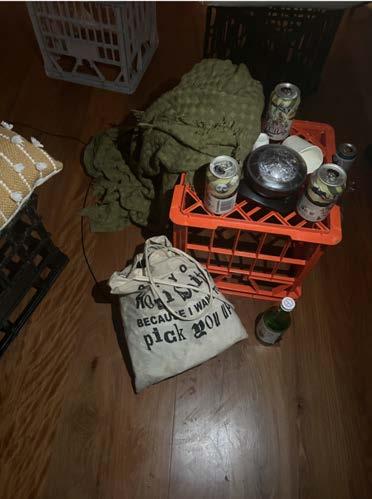
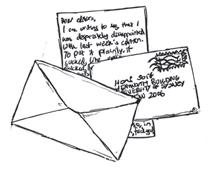
Got something you want to get off your chest? Have a bone to pick? Burning questions? Submit your letters to us!
Email through your real thoughts and feelings to us: editors@honisoit.com
Honi’s eyes and ears are everywhere, and we have heard the rumblings of a new Honi ticket consolidating. On the brewing ticket are Mehnaaz Hossein, Jayden Nguyen, Maeve Hopper, Lotte Weber, Purny Ahmed, Evelyn Redfern, Ellie Robertson and Annabel Li.
Will they be your Honi editors for 2025? It might be up to you…


Ariana Haghighi
On April 30, the University of Sydney Union (USU) held its first Reconciliation Action Plan (RAP) focus group session, aiming to consult with Indigenous and non-Indigenous students to develop its inaugural RAP. Callout for this forum took place over an email to all USU members, luring participants with a voucher reward.
The forum was led by Professor and Associate Dean (Indigenous Strategy and Services) Rick Macourt, who charismatically directed the discussion. Egregiously, there were no Indigenous students present at the forum, meaning that Macourt had to undertake significant labour in explaining Indigenous Australian issues, particularly to international students who did not grow up with basic education on these discourses. It also meant students felt slightly uncomfortable speaking ‘on behalf’ of Indigenous students; however, Macourt spoke with expertise and met us on our level of knowledge, not expecting us to provide solutions.
The focus group involved discussion in groups of four or more, responding to prompts such as, “What could the USU do to support Indigenous-owned businesses?” and “How Ideas ranged from the implementation of USU staffing quotas to forging partnerships with Indigenousowned businesses for contracting services such as baked goods at Courtyard. Macourt noted them down to “share with the USU”.
According to Macourt, the RAP will likely be finalised by the year’s end, but it requires significant consultation before its completion. The USU currently has a callout on the Jobs Board for a “Reconciliation Action Plan Lead”, which is an Indigenous and Torres Strait Islander-identified position — suggesting the initiative is yet to fully take off. Macourt explained that there are multiple tiers of RAPs in terms of intensity of commitment, and this is the lowest tier, meaning that there will be little detail and the commitments will not be binding.
Ariana Haghighi and Angus McGregor
On May 9, Sydney Law School announced that there would be no Winter intensives taking place in July 2024. This announcement was made via the Professional Law Program Newsletter and by the Sydney University Law Society’s (SULS) Education subcommittee on social media. The Law School typically runs
Angus McGregor, Zeina Khochaiche and Simone Maddison
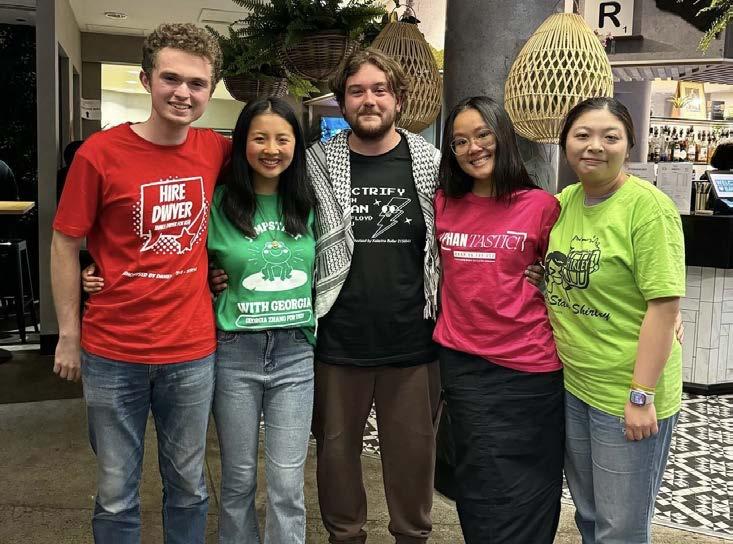
This year’s University of Sydney Union (USU) Student Board Directors were announced tonight. There were nine candidates contesting five positions. Georgia Zhang (Switchroots), Shirley (Zixuan) Zhang (Independent), James Dwyer (Unity), Ethan Floyd (Switchroots) and Phan Vu (Independent) were all provisionally elected.
This year’s vote quota was 729 votes, up from last year’s 476 votes. There were also over 4,000 votes cast this year, which is an increase of 1,000 votes from last year.
Both Zhang (Switchroots) and Zhang (Independent) were elected in the first round, with an equal count of 763 votes. Both Dwyer (Unity) and Floyd (Switchroots) were elected on the seventh count. Vu (Independent) was elected on the eighth count.
Angus Fisher (NLS), Daniel Park (Independent), Naomi Viegas (Independent) and Simon Homsany (Independent) were not provisionally elected.
This means that three out of four candidates in this year’s ‘left bloc’ were provisionally elected. Their vote counts were all aligned into a single preference deal, negotiated prior to the election.
This is a strong result for Switchroots who back up their victory in the SRC election last year with two new Board members. The election of Vu and Zhang (Independent) is a testament to the strong international student voting bloc,
intensive sessions in January, February, June, and July.
Holiday intensives are critical for students who cannot attend a core class in semester time due to a variety of factors such as an institutional exchange. Often, students rely on a holiday intensive to finalise a pre-requisite course before studying a related, more advanced course during the semester. Alternatively, they undertake holiday intensives to rectify issues with their degree progression.
Typically, the July session offers core units such as Torts and Contracts II, Evidence Law, and Equity, as well as various electives. The particular courses offered vary.
which both candidates targeted in their policies.
Despite extensive social media advertising and a promising policy platform, Fisher failed to get elected, a surprising result within student politics circles who were quietly confident about his victory.
Veigas and Homsany were both students who has only recently started studying at the university and therefore likely struggled to break through in a crowded field. Park, while more connected to the USU also struggled to find a clear voting bloc.
Dwyer, Zhang (Grassroots), Floyd, and Vu all have extensive experience either within student government directly or in clubs and societies which make them well positioned to take on the role. The election of Floyd and Zhang (Grassroots) is also an endorsement of a more overtly political student union.
Zhang (Independent) got the lowest score in the Honi quiz and despite a clear passion for international students, had a less coherent policy platform.
Honi Soit will cover the candidates as their portfolios emerge and policies are tested.
They will be joining Bryson Constable (Liberal), Julia Lim (Independent), Grace Wallman (Switchroots), Ben Hines (Independent), Grace Porter (Unity) and Sargun Saluja (NLS) on board.
According to the SULS VicePresident (Education), “I have engaged in conversation with the Deputy Dean to work on how to best support affected students and secure mechanisms to avoid disappointment in the future, including potentially earlier confirmation of availability of these units. In the meantime, we advise these students to reassess their intended progression as early as possible to ensure they can proceed with their degree as planned.”
A University of Sydney spokesperson told Honi that lower demand for winter/ summer units combined with challenges with staffing were behind the decision.
“The School consistently advises
Will Thorpe and Angus McGregor
On April 9, a mostly-empty New South Wales Legislative Assembly debated whether student concession fares should be extended to international and parttime students. The debate was triggered by a petition started by the SRC and SUPRA late last year when it reached 20,000 signatures in March.
Besides student organisations; universities, the City of Sydney council, and Greens and crossbench MPs have all publically supported the proposal. NSW Greens MP Jenny Leong opened the proceeding by thanking the signatories. She labelled the exclusion of parttime and international students from concession fares as a discrimination that “absolutely can no longer be ignored.”
Leong referenced a 2006 New South Wales Administrative Decisions Tribunal ruling which found that excluding full feepaying overseas university students from public transport concessions contravenes the 1977 Anti-Discrimination Act. The NSW Government exempted the Transport Administration Act from the Anti-Discrimination Act following that ruling.
Leong referenced Haylen’s purported prior support for expanding student concessions during her time in opposition.
In her response, Haylen noted fiscal pressures on the government, and stated that the government’s focus is on improving public transport services “to the benefit of everybody”. She indicated she would be open to working on the matter in future budgets. city.”
SUPRA President Weihong Liang observed little change in matters concerning concessions versus twenty years ago. Nonetheless, Liang remarked that Haylen’s comments were “better than just a no.”
The campaign for expanded concessions is expected to continue, with the SRC, SUPRA, and the USU all maintaining the policy as part of their respective platforms.
students not to rely on the availability of winter and summer schools and to plan ahead where possible,” the spokesperson said.
When asked how students could get advice on their degree progression in the absence of winter school the spokesperson said there were multiple support options.
“This includes enrolment information sessions and individual advice provided to students through the Professional Law Programs team and we encourage students to make use of this guidance.”



Angus McGregor
Starting in July 2025, university and TAFE students who complete mandatory placements studying courses like teaching, nursing, social work, and midwifery will receive payments of over $300 a week during the duration of their placements.
The payments will be means tested and will be paid on top of any other existing income support students receive.
The policy will cost an estimated $23.3 million a week for over 73,000 students across universities and vocational colleges.
This is the second major budget announcement targeting the tertiary sector after it broke yesterday that the government would change the way HECS debt was indexed. Rather than indexing payments to the Consumer Price Index (CPI), wage growth will be used instead.
Labor is targeting young voters as it attempts to deliver a second budget surplus while providing cost of living support to people in a way that does not drive up inflation.
It was also revealed today that after pressure from the Greens and crossbench that high HECS debts were making it difficult for young people to
secure home loans, the government has written to the Australian Banking Association asking the representative body to disclose how banks take HECS into account.
Paying students who undertake placements was a central recommendation in the University Accord Report which argued that students undertaking essential degrees needed to be supported so they didn’t “fall into poverty.”
The Accord Report also called on the government to repeal the Morrison government’s Jobs Ready Graduate program which hiked the fees of humanities degrees and change the date HECS is indexed. The government is still considering those recommendations.
Currently, tertiary students are doing hundreds of hours of unpaid labour in order to complete their degrees. Those placements are undertaken alongside course work and paid jobs.
Many students are forced to delay or defer their degrees while they save up enough money to undertake the placements. Others have dropped out entirely because they cannot afford to work full days without getting paid.
During placements, students have reported skipping meals, medication, and other bills to stay afloat.
Angus McGregor genuine student test. These providers have had a combined 17,000 visa refusals this year.
Government insiders and immigration experts have flagged an increase in student visa fees and financial capacity requirements in the budget as a new push to meet ambitious targets to cut migration numbers.
The student visa fee currently sits at $710, already one of the highest in the world, and may be increased to over $1,000. On the higher end, The Grattan Institute has recommended an increase to $2,500, with the excess spent on housing and rent assistance for domestic students.
Some education agents are also reporting the financial capacity requirement is being raised by 20% from $24,505 to $29,710. The figure was already increased by $3,000 last October.
The Department of Education leaked the higher figure on their website on May 2, before retracting it a day later saying it was an “error.”
The requirement is designed to make sure students entering Australia have enough money to pay for their own living expenses while studying full time.
Home Affairs Minister Claire O’Neil has cautioned 34 education providers, warning their licences will be terminated within six months if they do not change their operations to comply with the new
According to data provided by the Department of Home Affairs, 68,540 visas were granted in the first quarter of this year, compared to 68,960 in the same period in 2019.
Internally, the government is confident that they are on track to meet their target of 250,000 student visas by July 2025, down from 370,000 last year. The government has argued that more stringent conditions are needed to combat a rise in visa fraud since the border reopened post-COVID.
In response to these changes, education agents and student organisations are warning Australia is becoming a less competitive destination to study.
Only 23% of students now put Australia as number one, with the United States taking top spot, according to education agent IDP Australia.
IDP Education managing director Tennealle O’Shannessy said that the report was evidence government policy was starting to erode trust in the Australian education market.
“As governments in some countries adopt measures which impact international students, demand is
This change to the budget comes off the back of a continued campaign by Students for Placement Poverty (SAPP) which formed last year, exposing the wider public to the struggles of placement poverty.
SAPP told Honi that these changes do not amount to paying students at least minimum wage meaning placement poverty will continue. They argued this announcement was evidence their movement was gaining significant national momentum.
“$8 an hour is a slap in the face to students who are holding up crucial industries,” a spokesperson for the group said.
“Forcing students to wait until next year for a meagre and means tested payment is a cruel election tactic that ignores the obvious urgency of the crisis.”
The Greens also argue the policy does not go far enough and have questioned the scope of the payments. They point to the announcement as evidence that pressure from the left is working.
“Who knows how many students will be screwed over by means testing. The devil is in the detail,” Deputy Leader Mehreen Faruqi said.
In a statement, Education Minister Jason Clare said that these changes were
inevitably being affected and it is increasingly difficult for driven and bright students across the world to pursue their global goals,” she said.
Sydney University Postgraduate Association (SUPRA) president Weihong Liang told Honi that many students were concerned about the speed of the recent migration reforms.
“The uncertainty in policies has made students keenly feel the shift towards an unwelcoming environment,” he said.
“There has been a sharp increase in tuition fees and living costs. For example, international students often find themselves in a disadvantaged position in the rental market.”
TheGroup of Eight (Go8) has released a report arguing there is no direct causation between foreign student intake and the housing crisis.
The report instead blamed factors ranging from underinvestment and elevated construction costs to weak productivity growth. International students currently make up 4% of the private rental market.
“Any plan to impose a cap on international students as one mechanism to ease housing pressure – especially during a domestic skills crisis – is shortsighted and risks putting a brake on Australia’s economic growth and prosperity,” Go8 CEO Vicki Thompson argued.
University Vice Chancellors have expressed concern that the government crackdown would cost the sector over


part of a broader agenda to reform the higher education system.
“This will give people who have signed up to do some of the most important jobs in this country a bit of extra help to get the qualifications they need,” he said.
“Placement poverty is a real thing. I have met students who told me they can afford to go to university, but they can’t afford to do the prac.”

$300 million.
The full impact of the government’s policies has yet to fully translate to a decline in applications and enrolments in many Australian universities. Some Universities who maintain a lower risk level are still seeing increased numbers of foreign students enrolling.
The University of Sydney confirmed to Honi that enrolments rose in the first semester of 2024 and a spokesperson for UNSW said the university was experiencing significant year on year enrolment and application increases from international students.
The UNSW spokesperson told Honi that “government policy changes which could temper demand for Australian education take time to filter through and we share some concerns raised across the wider international student community and stakeholders around visa delays.”
A spokesperson for the Department of Home Affairs told Honi that the changes were “in line with the current Government priority to ensure those seeking to enter Australia on a student visa genuinely intend to study, and not use the student visa program as a pathway for employment purposes or remain in Australia indefinitely through non-genuine or fraudulent means.”
“So far, the integrity focused approach is self-regulating normalisation of student visa activity to pre pandemic levels,” the spokesperson said.
The budget will be announced on May 14.

Lotte Weber
On Wednesday May 1, a group of passionate educators and public service workers gathered to launch Boycott HP: a movement of Public Service Association (PSA) Unionists for Palestine cutting ties with their workplaces’ Hewlett-Packard (HP) devices due to political concerns.
At the forum a motion passed unanimously, focussing on the need to cut ties with HP and call on the NSW Government to break military ties with Israel. In attendance at the launch were staff from the University of Sydney and members of the NSW Teachers Association, in addition to a panel of key speakers.
This included Abigail Boyd, Greens NSW MP in the Legislative Council, Maryam Chekchok, teacher and member of Teachers and School Staff for Palestine, and Nick Riemer, linguistics academic and President of the National Tertiary Education Union at the University of Sydney (USyd).
At the two-hour forum held at the Arts and Cultural Exchange in Parramatta, the panelists highlighted their significant concerns behind Israeli-based technology like HP, as well as the silencing of proPalestinian voices in the public sector, particularly teachers in NSW schools.
According to PSA for Palestine, HP is currently signed to a $24 million contract from the NSW government, and is the primary technology provided in
educational settings.A Boycott,Divestment and Sanctions (BDS) initiative already exists globally, with the PSA for Palestine adding NSW-specific pressure.
Teacher Maryam Chekchok spoke about HP’s role in limiting movement in Gaza and explained that the circumstance “is stark and it is disturbing”.
As a public sector worker, Chekchok called on fellow employees to pressure schools “not to be complicit in enabling Zionism”.
She also addressed the serious backlash NSW teachers are facing due to their support for Palestine, stating that “advocating for Palestine is not antiSemetic, it is pro-humanity ”.
Abigail Boyd, Greens MP, shared the challenging process of finding out just how much the NSW government is investing into HP.
Pointing to a lack of political transparency, Boyd asked, “if they’re so proud of us supporting Israel, why won’t they tell us how much they’re spending?” She went on to say that “our public money is providing the circuits and wires to support a genocide”.
Nick Riemer also spoke about the background of the BDS movement and their political goals. These include an end to the occupation in Gaza, the abolition of apartheid against Palestinians, and the right of return for Palestinian refugees.
When queried about the effectiveness of an HP boycott, Riemer responded, “you do it as a political campaign which you hope will have knock-on effects”, with the true benefit lying not necessarily in economic limitations or setback but by “creating a mass movement and enduring long term social and political change”. He also stated that “Zionists aren’t welcome and shouldn’t be welcome”.
According to PSA for Palestine, HP provides “services for Israeli police” and has
“been the backbone of Israel’s apartheid for over a decade”. These services include data storage and security services for Israeli prisons, and servers for a “racially segregated ID card system”. This concern comes after heightened atrocities unfurl, with the death toll in Gaza exceeding 34,622 as of May 2.
PSA for Palestine is a collective of NSW public service workers campaigning against Australia’s support of Israel and can be followed via their Instagram to get involved. Hermann’s Bar on May 10.
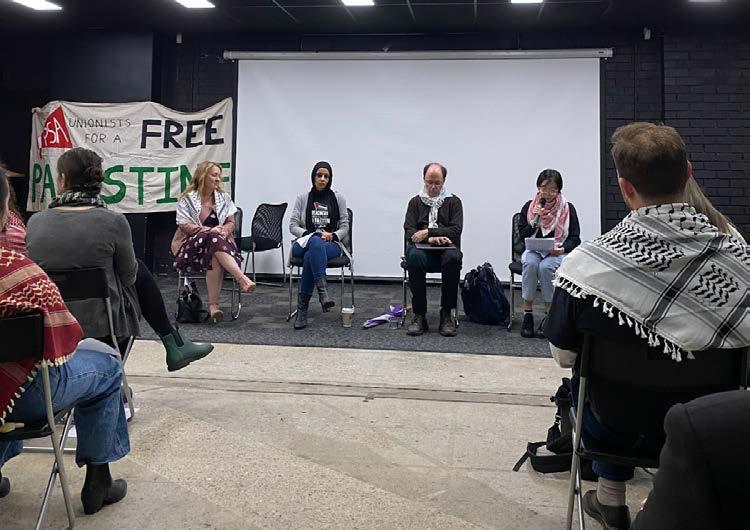
Aidan Elwig Pollock
Morale remained high as the USyd Encampment entered its third week last Monday, despite heavy rain that has continued throughout the week.
On Sunday May 5, 31 millimetres of rain fell on Sydney. Over 170 millimetres of rain has fallen on the city since the start of the month, marking the wettest first fortnight of May in over two decades. This has already exceeded the May average of 117.4 millimetres according to the Bureau of Meteorology, with more rain set to come.
Despite the poor weather, the encampment continues to grow. Honi Soit counted over 70 tents the morning these photographs were taken, although several tents had been wrecked by bad weather.
Dante, a non-USyd student who joined the encampment, said that despite the night of Sunday May 5 being “really bad,” the encampment was “still going strong; I don’t think anyone is demoralised.”
“This is an obstacle we have to get through but we have a very strong cause,” Dante continued.
In fact, Honi reported on Saturday that Shovan Battarai, organiser with Students for Palestine, claimed that the weather was the biggest obstacle facing the encampment. Nevertheless, community support remains strong.
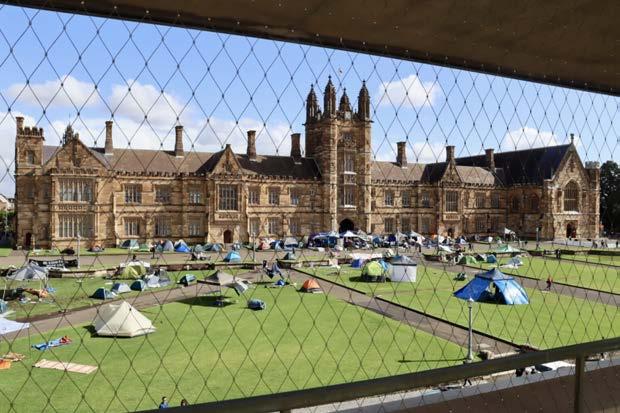



Valerie Chidiac
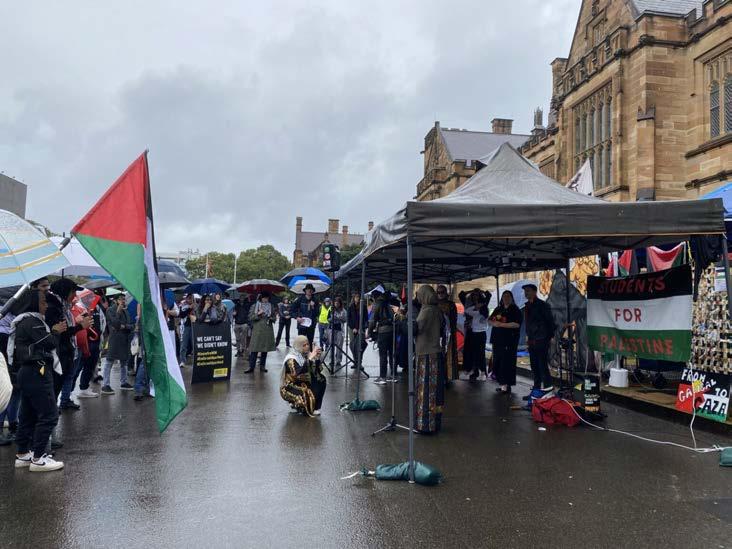
On Saturday May 11, an emergency rally centring around divestment was held at the USyd quad lawns, where the encampment has remained for the past 19 days.
This rally was endorsed by Students for Palestine, BDS Youth Australia, BDS Australia, Palestine Justice Movement Sydney and Vote 4 Palestine.
Saturday also marked “World Keffiyeh Day,” where Palestinians and activists urged others to don the keffiyeh, itself a cultural headdress and a symbol of solidarity with the Palestinian people.
Honi Soit spoke to Shovan Bhattarai, organiser with Students for Palestine, who noted that many people tend to ask if management pressure is making things more difficult for the encampment, when in fact it is the weather that poses the biggest obstacle. Despite this, the amount of tents across the Quadrangle are increasing and the community support is unwavering.
Speaking to the Palestine Action Group weekly protests, Bhattarai noted that protest attendance has been solid, with a notable spike in numbers when escalations like the attacks on Rafah occur. The Quad lawns are expected to fill up tomorrow as protestors march from Belmore Park to the USyd encampment.
“For 217 days, we have been sitting behind our screens watching a genocide unfold,” began Palestinian activist Dalia Haj Qasem. Qasem noted how the victims are predominantly children, and spoke to the discovery of another mass grave and the commencement of Israel’s military operation in Rafah.
She then called out Prime Minister Anthony Albanese for denouncing protest slogans like “intifada,” but not “war crime after war crime after war crime after war crime.” Qasem concluded that to “make Israel the pariah state it should always have been,” financial and educational ties must be cut, citing Israeli universities who operate on stolen land and the arms manufacturers creating weapons that kill Palestinians.
Jane, a Baramadagal woman, gave the
intimidation of the Sydney University Muslim Students Association (SUMSA), who are participating in the encampment.
Greens Member for Newtown Jenny Leong and senator David Shoebridge were both present at the rally. Shoebridge spoke to his visit to the encampment of University of Tasmania, and his disappointment in his alma mater, USyd, standing by as a genocide was happening.
Shoebridge spoke to the “tiny step” closer to Palestinian statehood as 143 countries — including Australia — voted in support of a motion that provides Palestine “rights and privileges” in the United Nations.
“[Foreign Minister] Penny Wong in the last half an hour has come out and said this should not be misunderstood as Australia voting for Palestinian statehood. Then what the bloody hell was it?”, exclaimed Shoebridge.

her placement in Palestine but was rejected on the basis of safety concerns and “that it isn’t an established profession in Palestine”.
Sayara rejected this, stating a “Western understanding does not dictate or define the line of professionalism” and that “Palestinians professionals have been working in incomparable situations” Sayara was able to practise in Palestine, and urged others to “bring Palestine into the conversation and… research” as the movement is reliant on the voices of millions around the world.
Afterwards, attendees marched to F23 building, where Mark Scott’s office resides and chanted outside. Chants throughout the rally included “1, 2, 3, 4 open up the prison doors, 5, 6, 7, 8 Israel is a racist state”, “we don’t want your twostate, we want all of ‘48” and “disclose, divest, we will not stop, we will not rest”.
Acknowledgement to Country and then spoke to the refusal of Federal Attorney General Mark Dreyfus to give legal advice to universities about “intifada” and “from the river to the sea” slogans. Jane said she is “happy to give free advice” and just as First Nations people here say “from the mountains to the sea”, “from the river to the sea” is “not calling for the oppression of other people” but for the freedom to exist. She concluded by saying everyone has a “cultural, moral or civic obligation… even when words fail us.”
Deaglan Godwin, SRC Vice President and organiser with Students for Palestine spoke next. Godwin stated that the university is “not content with arming Israel… [and] seeks to normalise the apartheid regime” through exchange programs.
“Does OLE: Experience Israel give you the experience that Palestinians go through?” exclaimed Godwin.
He continued by saying that it is “a whitewashed image of what Israel is” and that protests will continue until universities cut ties with Israel, before reiterating the intention to grow the encampment further, inviting students, staff and the general public to join the Palestine solidarity movement.
Vieve from Students Against War spoke to the activity and responses to encampments across Australia. They referred to Western Sydney University management telling students through security that they can chalk messages as long as they don’t include the phrases “long live the intifada” and “from the river to the sea”.
Vieve also mentioned the sit-in by students protesting Tel Aviv University’s presence at the Sydney Abroad Fair. They said that the Tel Aviv University President sent a letter to Vice-Chancellor Mark Scott describing the sit-in as “atrocious” and threatened to cut academic ties with USyd.
Vieve also spoke to the 93% vote by the NTEU to cut academic institutional ties with ISrael, but denounced tactics like threats to ban chants and the
He called out Australia’s direct and indirect contribution to weapons manufacturing, stating that the “US stopped the ‘dumb bomb’ but Australia put add-ons to make it a ‘smart bomb’”. Shoebridge reiterated the need to sever ties with weapons manufacturers like Thales and said “we don’t want Boeing [Defense, Space and Security division] to come here” either.
“The amount of tents across the Quadrangle are increasing and the community support is unwavering.”
Qasem spoke again reaffirming that “the liberation of Palestine has never been contingent on the expulsion of Jews”, and it means “equal rights for all… no apartheid, no occupation, no settlercolonial violence”.
Sheikh Wissam Charkawi talked about the mass graves, declaring that “we have mass silence” when it comes to Palestine. Charkawi said that he joined the rallies to end violence and murder of women, noting that he joined “for all women, whoever they may be and wherever they are”.
Charkawi spoke to the “weasel words” of the Australian government, who are “taking the voices of the community for granted, not just people of Arab background”.
The final speaker was Assala Sayara, a Palestinian activist born in Bethlehem who proudly stated in Arabic, “we Palestinians teach life” even “in mourning… in the tents”. Speaking to a disillusionment with educational institutions who pride themselves on “decolonisation… [and] decolonial theory”, Sayara said that her teachers are “the students of Gaza… Dr Adnan, Bisan, Wael Dahdouh”.
Sayara spoke about her personal experience as a USyd student studying social work. She proposed to complete
USyd security stood at the front of the march, while more security stood next to the police officers along the City Road footpath, so as to prevent protestors from moving onto the road. Attendees were later invited to a meal of Palestinian makloubeh.
What does the UN vote actually mean?
This translates to an ability for greater participation such as being seated in the UN General Assembly hall by alphabetical letter and not towards the back, putting concerns on the agenda, and having their staff on committees.
While many member states have indicated their desire to recognise Palestinian statehood, this vote is not a resolution. Instead, it is a motion deeming Palestine as qualified to join the UN and is calling upon the UN Security Council to reconsider Palestine’s application for full membership.
Only the Security Council can decide on bids for membership, and it is likely that this bid will be vetoed by the US, one of nine countries that voted against the motion.
Follow updates on our Instagram and Twitter, and visit Students for Palestine Sydney Uni for daily schedules.
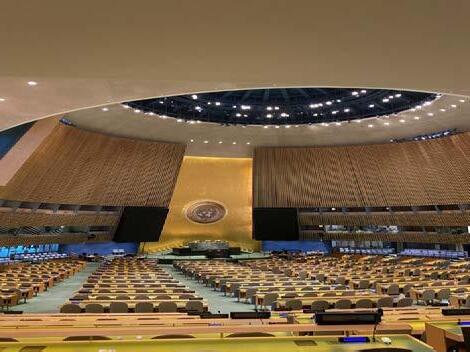
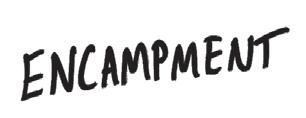
Honi Soit reports. Photography: Honi Soit and Ishbel Dunsmore.
April 23 - USyd students occupy quad lawns in solidarity with Gaza
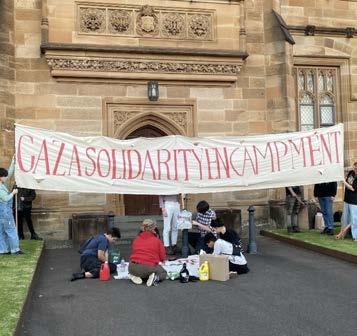
University of Sydney student and staff activists commenced their first day of a campout in support of encampments at Columbia University and Barnard College, who are protesting institutional complicity in the genocide in Gaza. The Gaza Solidarity Encampment tents taking place in the US have been put up for almost one week, following police removal and the arrest of over 100 Columbia students.

“The graffiti is for a cause that is important right now,” said Jasmine Alrawi, the convenor of Students For Palestine, “we’re painting slogans and flags for the hundreds of people that walk through the tunnel every day.”

New additions to USyd’s Graffiti Tunnel call for a Free Palestine
At 6:30pm, students congregated to spray-paint Palestinian flags, symbols and slogans of Palestinian Liberation on the walls of Sydney University’s Graffiti Tunnel.

April 27 -Gaza solidarity encampment continues into the weekend
While the size of the encampment remained steady, it had amassed a growing number of donations from members of the local community and other students who are unable to stay the night, mostly food, water, blankets and sanitary products.

Twenty-ninth Palestine Action Group protest fortified by the global student movement
Sunday’s march began with a silent procession and then protestors’ voices rang loud and clear through the streets of Sydney’s CBD. Chants included “ceasefire now”, “from the sea to the river, Palestine will live forever”, and “Israel out of West Bank, Israel out of Gaza, Israel out of Palestine, long live the intifada.”
April 28 - Encampment contingent attends PAG Hyde Park protest

NSW Police operation on campus evacuates multiple buildings following a “threat”

Students for Palestine organiser Jasmine Al Rawi declared to the crowd that the University of Queensland will join USyd and the University of Melbourne with its own encampment.
April 29 - F23 Building incursion
April 24 - Day 2 of the USyd Gaza Solidarity Encampment
Wednesday April 24 saw a schedule of rallies, speak outs, and teach-ins. However, questions hung over its survival with a planned ANZAC Day dawn service on April 25.

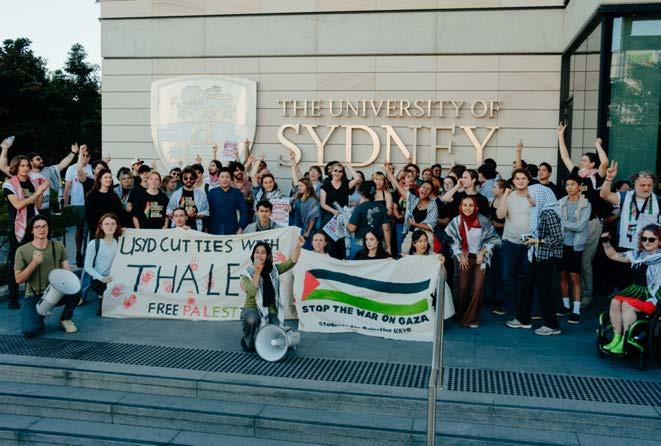
Acting Vice-Chancellor and President Annemarie Jagose sent an email to all students highlighting students’ right to “assemble peacefully and express their views”, but noted, “the University will not hesitate to take firm and decisive disciplinary action where appropriate if a student or staff member is found to have breached the Student Charter, Code of Conduct or University policy”.
April 25 - Day 3 of the USyd Encampment vies with Anzac Day

It was broadly noted that the campus security had been friendly so far, but there was a feeling that the university will want protestors be moved on by the week’s end. with graduations set to begin.
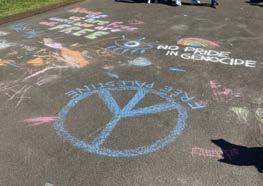
April 26 -Day 4 of USyd camp for Gaza sees greater media and community attention

Students carried posters and banners in support of Palestinian freedom and an end to the genocide, in addition to messages asking for onlookers to “join the camp @ USyd.” The encampment was mentioned across different speeches, whether that be the commendation of students worldwide or the reactions of Palestinians in Rafah who wrote messages of support while displaced in their tents. The number of tents had grown significantly by Sunday evening, sprawling across both sides of the Quadrangle lawns.

Socialist Alternative (SAlt), Solidarity, Grassroots and the University’s Political Economy Society have all maintained their contingents over the weekend, and committed to keep camping over the coming week throughout graduation ceremonies.
A group of campers entered the F23 building, where the chancellor works, to reiterate their demands for the university to divest and cut ties with weapons manufacturers and Israel. Protesters reiterated the clear encampment demands — the disclosure of and divestment from all university ties to Israel.
An official letter from the Deputy Vice-Chancellor Peter McCallum was circulated outlining what calm cooperation will look like for the upcoming graduation, and “respecting” the encampment for their “restraint” during Anzac Day.
Approximately 50 people joined the overnight and braved the “chilling winds” for a peaceful picket held alongside the Dawn Service.
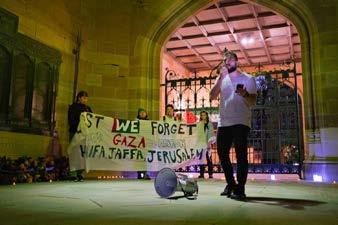

Principal advisor to Vice-Chancellor Mark Scott, Stephen Garton, visited the encampment and showed his support for the protestors — an unexpected move from management figures. Also, a University of Melbourne Encampment commenced.
Steady showers fell over the encampment and rally, affecting turnout and safety. Speeches continued outside the F23 Building with Jewish Pro-Palestine Activist, Yaakov, Tzedek Collective, and Jews Against the Occupation members all delivering remarks. “I see no antisemitism here,” Yaakov said, “we have no time for Zionist crocodile tears.”


May7 -Israelescalates attacksonRafah, encampmentdoublesdown
Hundreds of students attended a snap rally organised by the Encampment, in response to the most recent attacks on Rafah after Israelrejectedaceasefire.
A Palestinian activist from Students For Palestine spoke about how Palestinians were promised the south of Gaza would be a safe zone, which has now “completely disappeared”.

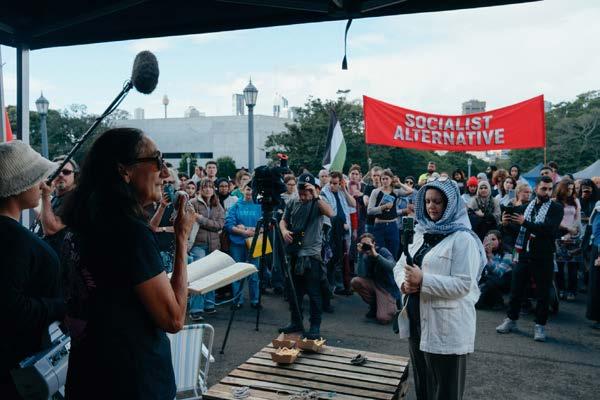
May 6 - Morale at USyd Encampment remains high despite storms
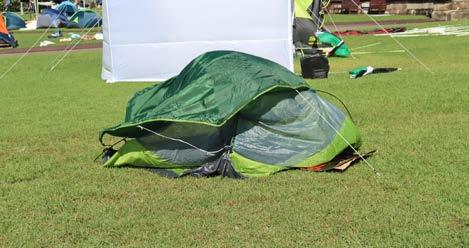
Despite the poor weather, the encampment continued to grow. Honi counted over 70 tents this morning, although several tents had been wrecked by bad weather. 31 millimetres of rain fell on Sydney last night, with 124 millimetres having fallen since the beginning of May exceeding the May average of 117.4 millimetres according to the Bureau of Meteorology.

May 3 - Encampment remains steadfast in the face of Zionist counterprotests
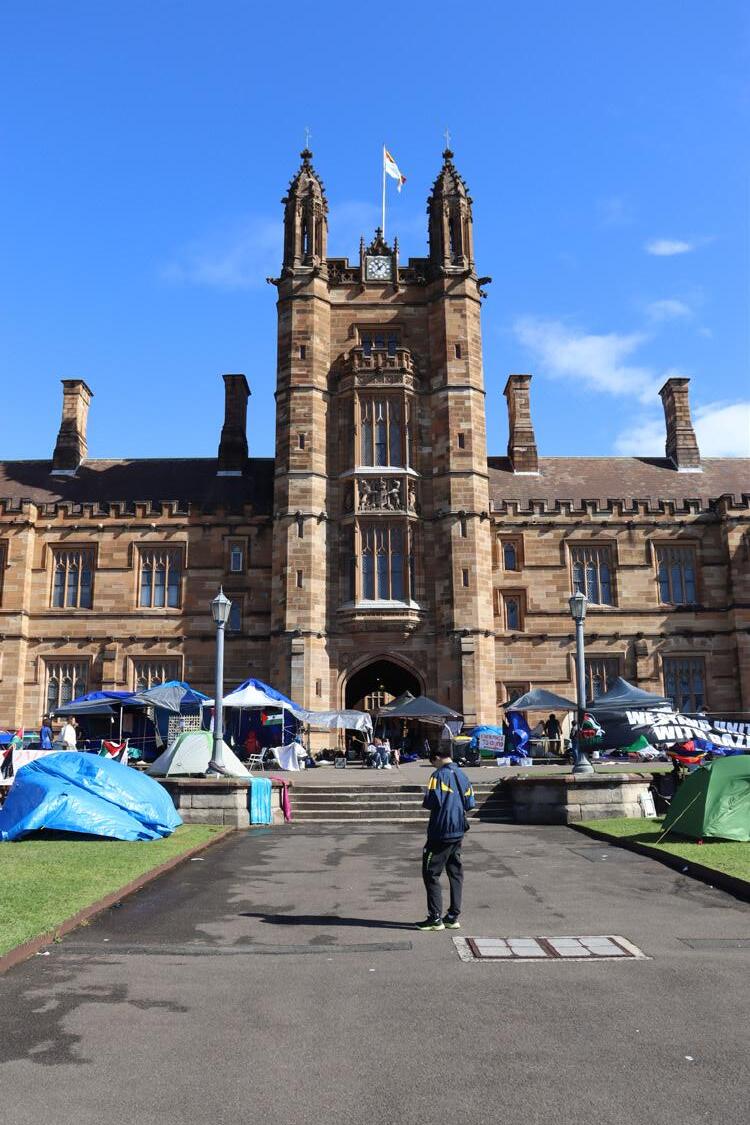

May 8 - Rain, graduations and pressure on management: Day 16 at the Encampment

The Encampment was being acknowledged at the beginning of graduation ceremonies.
The speaker repeated the University’s talking points, emphasising that free speech is a key part of the University but antisemitism and Islamophobia are not tolerated. Protest was also situated as a key part of the university’s history through a video during graduation proceedings.
This unfolds in the wake of police emergency response teams being established in Sydney and Melbourne, in the context of rising protests, especially at Monash. This adjoins the Education Minister Jason Clare’s report that the tertiary education regulator had also set up a taskforce.
After raising more funds than necessary through the public GoFundme, the Encampment have decided to donate $5000 to evacuate a Palestinian from Gaza. They explained their reasoning on an Instagram post, stating that “with the current escalation in Rafah, it would be an insult to Palestinians in Gaza for us to use it to make ourselves more comfortable while our peers are currently struggling to raise funds to evacuate their families from Gaza to so-called Australia”. The donation will go towards evacuating “a family member of a dear friend of the camp”. The Encampment have promised to post a “receipt of the transfer”.
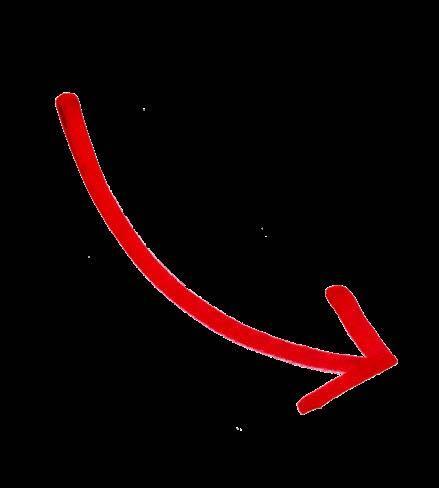
Day 17 at the University of Sydney’s Gaza solidarity
encampment
After social media posts called for the wider community to defend the USyd Gaza solidarity encampment against a Zionist counterprotest coined the “March for a Safe Campus”, the Friday rally drew a large crowd. Standing across the Quad lawns, hundreds of people were in attendance, alongside anti-Zionist Jewish organisations such as Jews Against the Occupation and the Tzedek Collective.
The protest also drew media coverage by Reuters, SBS, ABC and Channel 10, as well as Sky News. The Zionist counterprotest began at the City Rd end of Eastern Avenue, and worked their way towards the camp. Besides a few attempts by Zionist supporters to verbally intimidate, there was no escalation.
The encampment chanted non-stop until Zionist protestors voluntarily left university grounds soon after.
Vice Chancellor Mark Scott spoke to Patricia Karvelas on ABC Radio about the encampment. He maintained the right and “responsibility to exercise free speech” to be “exhibited in a way that is not threatening…menacing…not shutting down the free speech and the work of others.”
He acknowledged the “discomfort” and “upset” experienced by Jewish students and staff, but followed that up by saying “but I don’t think that it is an unsafe space”, calling it a “heightened environment”. As for slogans like “from the river to the sea”, he suggested that if Palestinian supporters feel that “their use of that phrase is being misinterpreted, that it doesn’t mean what our Jewish community is interpreting it to mean, they should use another phrase. Why use a phrase that is open to misinterpretation and that is so hurtful? Say what you mean, mean what you say.”

May 1 - Encampments expand Monash University students establishments an encampment on their Melbourne campus.

May 9 - Students strike for Palestine, NTEU supports boycott motion on Day 17 of the Encampment
saw participation in the Student Strike for Palestine and attendance at the National Tertiary Education Union’s (NTEU) Sydney Branch vote on a motion to “endorse the institutional academic boycott of Israeli universities, and to cut ties with the war industry.”
Simultaneously, another contingent attended the NTEU’s Sydney Branch meeting in the Carslaw Building. Chaired by President Nick Riemer, the meeting was called to “support the right of NTEU members to engage in boycott, divestment, and sanctions (BDS) actions that seek to end the occupation of Palestine.”
The motion was passed unanimously following endorsements from the University’s SRC and General Union of Palestinian Workers Australia. Consequently, the Branch called on University management to “cut ties with all organisations that enable the current Gaza violence”, which includes “all Israeli universities” and the “weapons industry and militaries in general.”
May 10 - Mud, Organising, Rally for Rafah: Encampment
Day 18
Campers have endured muddy lawns on the quad, while management instructed that they are not permitted to pitch tents on wooden pallets. Nevertheless, the growth of tents in the encampments’ second week is palpable.


May 11 - Day 19 of USyd Encampment: standing in the rain and speaking in solidarity
An emergency rally centring around divestment was held at the USyd quad lawns, where the encampment has remained for the past 19 days.
At a UN General Assembly vote, many member states indicated their desire to recognise Palestinian statehood. However, this vote is not a resolution for membership. Only the Security Council can decide on bids for membership, and it is likely that this bid will be vetoed by the US, one of nine countries that voted against the motion.


Mountains of volcanic rock rose and fell as our 4x4 careered down the two lane highway. We were now a few hours outside of the Icelandic capital in Reykjavik, moving further along the Southwestern coastline and away from the busloads of tourists traversing the Golden Circle loop.
Eventually we slowed, turning onto an unremarkable dirt road. Our guide pulled up in front of a large cave, parking against the fierce Arctic wind so it wouldn't rip the car doors off their hinges.
“Welcome to the Elf Church”, my guide exclaimed with a grin. I assumed this was an attempt at a joke.
“Elves, like Lord of the Rings?”, our American tour companion queried.
My guide chuckled, “I don’t believe in things like that, that's something to sell movies.”
Icelandic elves are hidden people, he explained. They live in special parts of the landscape. The rocks and in the mountains. The legend, passed down orally for centuries, goes that these elves gathered here to perform rituals.
He recounted an old wives tale he was told as a child — if a baby or young child turned out to be badly behaved, it was because its parents had left them unattended for too long, and the elves had got to them. Elves like to steal babies, and then replace them with an ill-humored elf, transformed into human form. The only indication given was if the child grew to be particularly naughty, a point of despair for parents.
“What do you think?”, I asked, intrigued.
He grew sterner. He explained that he didn’t believe in the traditional sense, but he knew people who claimed to have seen them. The otherworldly, at times freezing landscape would have that effect, I figured dismissively. What he
said next caught me off guard.
“But I believe in the spirits, that there is something out there, in the mountains. You can feel it, if you stay out here long enough.”
On a high after a few days of hiking, glacier viewing and Icelandic beer drinking, this was captivating. My guide was a man of few words, so we continued on the tour, and I didn’t push it.
Do Icelanders really still believe in elves? Or was my guide just having me on? Back home, warm and in my dorm, I began to investigate.
The first point of call was a consultation with Google, and the academic meccas of Quora and Reddit. Online descriptions seemed to match the explanations given by my guide, describing a concept present in both Faroese and Icelandic folklore. For those new to the Nordic sphere, Faroese is a North Germanic language from the mid14th to mid-16th century and underpins a similar cultural fabric attributed to the Faroe Islanders — a self-governing archipelago of the Kingdom of Denmark. These online descriptions describe the shared mythology of hidden people or “huldufólk” — humanlike beings that live in the Icelandic landscape or a ‘parallel plain’, think like the alternate dimension in the 2016 film, Arrival
It appears that Elvish folklore is also somewhat of an academic obsession for Nordic scholars. Entire dissertations have been written for universities across the world, such as the impressively named Charles Robinson III’s work for the University of California. In it, Robinson attempts to discern between hidden people and elves, but perhaps complicates the picture even moreso: “Elves are small and good… except for the dark ones… Huldufólk are larger, our size, and stricter, meaner, more natural, closer to nature, spiritual, like an avatar,
"Do Icelanders really still believe in elves? Or was my guide just having me on? Back home, warm and in my dorm, I began to investigate."
with a slightly darker energy." While descriptions and behavior vary greatly, the same enduring folklore remains.
They maintain a strong tie in Icelandic culture, permeating holiday traditions and literature. They hold intimate connection to four main holidays — New Years Eve, Thirteenth Night, Midsummer Night, and Christmas, and include farming traditions like giant bonfires or leaving cream and butter out for the elves, a symbolic reminder of their existence. One of the first mentions of elves in the Icelandic literary canon appears to be in Snorri Sturluson’s Prose Edda, a hugely influential text that forms much of the foundation of our modern understanding of Nordic Mythology. Others argue that the oral nature of these histories means these ‘sightings’ could date back to the first days of Norwegian settlement in the Viking era. These ideas have influenced European literature more broadly, inspiring Tolkien’s own mythology, as directly as Gandalf’s godlike characterisation being appropriated from descriptions of the Norse God Odin.
Naturally, the esteemed Reddit users offered the most logical commentary. Most users denied widespread belief, pointing to a nationwide practical joke on tourists, and an effort to garner international publicity to drive tourism. One interesting post I came across was
that the idea more broadly represents a traditional Icelandic relationship with the environment, the concept that the landscape is not neutral and must be looked after because humans are not its only inhabitants.
So I’d been had. Feeling vindicated, I skimmed a few more articles eager to learn more about this enigma. But even if the actual belief numbers were inflated, and my guide had been lying to me for the magic of the tour, it appears the folklore is still very much cherished. So much so that it has dictated urban planning and political decisions.
In an article published in 2013 by The Atlantic, a survey cited that 54% of Icelanders believe in the possibility of the existence of huldufólk. The protection of sacred “elf sites” has been on the agenda of multiple environmentalist groups like “Hraunavinir”, and natural disasters like volcanic eruptions have been attributed to poor elvish appeasement.
The invocation of this folklore also often surfaces in political discourse, with the Icelandic Road and Coastal Administration using from at least 2013 a five-page standard reply to press enquiries about elves in relation to construction in ‘elf territory’, including to The Atlantic. Fascinatingly, MP Árni Johnsen relocated a boulder, home to an “elf family”, to his backyard after a serious car accident. His car was totalled but he was unscathed, a miracle he attributed to the elves using their powers to protect him.
While it may be more likely that the majority of Icelanders love to exaggerate this ‘belief’ to laugh at tourists, it is clear that the elvish anachronism and its wider folklore is entrenched in the Icelandic culture and psyche. Who knows — maybe there are elves out there laughing at our ignorant musings, never to be seen by the human eye.
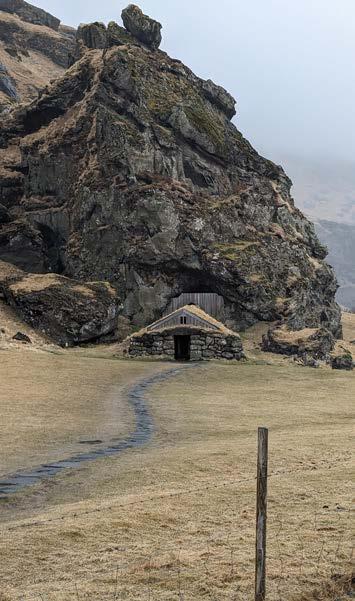

Peter Lavilles turns on the TV.
Here is how to see in four dimensions. All you need to do is watch TV. You probably already know the three dimensions of space, where motion can be represented in three directions: in/ out, left/right, and up/down. We call these direction x, y, z. A fourth dimension would be another invisible direction w you can move in. Before saying this is impossible, consider Mario living in twodimensional ‘flatland’ who can only ever see cross-sections of 3D objects. The in/ out direction is completely invisible to him as he races across the screen, yet it still exists. What if you are like Mario living in flatland, and there exists a whole new dimension that you have just never come across? What if you are only seeing 3D ‘cross-sections’ of a four-dimensional world?
To arrive at 4D you need to somehow collapse a dimension. You do this every time you watch movies, draw an object on paper, or enjoy perspective artwork. Imagine a vast paper-thin TV screen that contains within it an entire threedimensional world. Objects trapped in there can move around in three directions, yet from your outside vantage point it looks like a flat screen; call it a ‘hyperplane’. Stack a large number of these hyperplane screens on top of each other making sure that objects are connected from one screen to the next,
Now let’s return to the fourdimensional hyperspace of stacked screens. You are trapped within a single 3D screen, and you can only see crosssections of higher dimensional objects, like Mario. If you were to pass through a hypersphere (the 4D version of a sphere), you would see a point continuously grow into a small sphere, increase to a maximum spherical size, then decrease and disappear back into a point.
What would it look like to move around in four dimensions? Imagine you are a hyperspace explorer, and you hold in your hand a remote control with four buttons (w, x, y, z) and a switch that can be pushed forwards, backwards, or remain neutral. Currently the w button is pressed, and you are standing inside a screen where x, y and z are the normal directions of space, and w is the fourth invisible direction. Push the switch forward, and objects begin to morph. You can’t believe your eyes as objects seemingly grow, shrink, or completely disappear and reappear. When the switch is neutral, objects will stop morphing.
Push the switch backwards, and objects morph in the opposite direction. The switch makes you move back and forth (translate) along the invisible w direction.
You now press the z button, and the world around you changes dramatically.
First published in PhySoc's magazine, Jeremy.
"Modern physics has shown us that we can no longer separate time from space... "
The floor remains unchanged; if you previously drew flat pictures on the floor they will still be there. However, all objects above and below the floor begin to stretch into strange shapes, as if they were made of soft clay. The further away from the floor things are, the more rapidly they change.
Let’s take a quick detour back to Mario. What would he see if his flatland world is embedded within our space? If his flat screen were to pass through a soccer ball, he would see a point grow into a small circle, increase to a maximum circular size, then decrease and disappear back into a point. If the screen he lives in rotates 90o, everything he sees would stretch into strange shapes except for a constant line along the axis of rotation; the further away images are from this line, the more quickly they would change.
Transformation slows to a halt, and you find yourself in a strange world which, apart from the floor, bears no resemblance to what you saw before. You have undergone a 90° rotation around
the x-y plane, and w is the new up/down direction. When you push the switch back and forth, objects will morph as you translate along the now invisible z direction.
Rotating a four-dimensional object looks the same as you would expect. Say a hypersphere is rotated around the w-z plane. If the w button is pressed on your remote control and the switch is on neutral, then you simply see a crosssectional sphere rotate normally around the z direction.
Mirror reflections in four dimensions look even simpler. If the x-y-z hyperplane screen was made into a mirror, then the only difference would be a reversal of your switch direction on your remote control. When you push the switch forwards objects will morph in the opposite direction along the invisible w direction than they did before.
Why do we care about seeing in four dimensions? It’s pretty darn cool. Secondly, all the world’s a fourdimensional stage. Modern physics has shown us that we can no longer separate time from space, and that they are intimately connected in a 4D structure called spacetime. When we can see in four dimensions, we can see the very fabric of the cosmos.
Mihir Sandana sends a message.
Meta, the parent company of Facebook, is threatening to pull WhatsApp from India due to the revision of the 2021 Information Technology Rules, which changed guidelines around encryption. The rules now stipulate that any social media intermediary providing message services, like Meta, will be required to enable the identification of the first originator of a message. The company has taken the Indian Government to court over fears this revision will jeopardise the privacy of its users, as it necessitates that the social media giant would have to break its end-toend encryption. This feature ensures that only the sender and receiver of a message can read, view, or listen to said message, not even Meta.
The Indian Government, on the other hand, argues that this is a necessary provision as it would aid in the investigation and prevention of crimes that threaten the sovereignty, integrity, and security of the State, including terrorism, the distribution of child pornography, and most importantly, misinformation through deep fakes and the proliferation of fake news. Like other Meta products, WhatsApp continues to be a hotbed of misinformation. However, unlike Facebook and Instagram, due to WhatsApp’s encryption, it is much harder for Meta to moderate content on
the platform. While counsel for Meta has outlined that privacy is a fundamental right, the Indian High Court responded that fundamental rights are “not absolute.” There must be a balance that is struck between security and user rights.
If Meta realises their ultimatum, this could have disastrous consequences for how Indians communicate, both within and outside of the country. In 2023, WhatsApp had over half a billion users in India, with the site projected to grow to 795 million people by 2025. WhatsApp is more than just a messaging app –– it plays a central role in India’s digital economy, a backbone for countless businesses and service jobs.
Writer Russell Brandom notes “there’s no clear competitor to fill its shoes, so if the app is shut down in India, much of the digital infrastructure of the nation would simply disappear”. Outside India, the removal of WhatsApp would leave international students and the rest of the diaspora marooned, with no other alternative to affordably stay in touch with those back at home.
Moreover, if Meta were to win this legal challenge, it would set a very dangerous precedent. By successfully gambling such a vital medium of communication for over half the country, the company would gain an inordinate
amount of power. While currently, Meta is erring on the side of ethics, attempting to preserve the rights of its users’ privacy, the question arises, what happens if it chooses to throw its weight behind a cause that helps further its bottom line at the expense of its user base?
Conversely, if the Indian Government succeeds, this would be an existential threat to privacy online, especially in an increasingly radicalising environment. Though there is some validity to the justification given by the Indian Government, it is hard not to see these revisions as a thinly veiled attempt by the incumbent regime to further consolidate power online and more tightly monitor its citizens. As it stands, Narendra Modi, the current prime minister, has already created an environment of censorship and surveillance, ruthlessly cracking down on any dissenters online, which, with the implementation of these new guidelines, would make it even harder to exercise free speech online. When every individual that stands in opposition to the current government is labelled a threat, an anti-national and a terrorist, wording like “an order shall only be passed for prevention, detection, investigation, prosecution or punishment of an offence related to the sovereignty and integrity of India, the security of the State,” threatens the
sanctity of freedom of expression, the very foundation of democracy.
As Indians head to the polls in the largest election in the world, answering questions regarding how they exist online is becoming increasingly vital to the health of their democracy. Currently, Modi is positioned to win his third term in power. Thus, it is critical to evaluate how legislation like this can be used to further police and surveil Indians, and by extension, threaten key principles of their constitution, such as the right to privacy. Furthermore, it is imperative to consider ways to curb misinformation without infringing on these fundamental rights. To ensure that this election is not held captive by campaigns of misinformation. Further, in this current climate, where the internet continues to be cordoned off by large private companies that dictate and govern the terms of communication, the connection mustn’t be policed and gambled with.
WhatsApp is a space for community. A digital gathering space that must be protected. No matter the quality of the forwards on the family group chat, or the questionable graphic design choices of the many circulated good morning messages, it is worth fighting for.

Rand interviews Coral Lever and Kimberly Peckham.
Coral Lever is a proud Wiradjuri woman from Nanima Mission in Central-West NSW, now living in so-called Sydney for the past twenty years. With her sister, Kimberly Peckham, also from Nanima Mission, she runs mutual aid organisation First Nations Response (FNR) in Marrickville.
Rand: Can you tell us a bit about the First Nations Response space, and the kind of services that it provides?
Coral: I think our name represents us really well, because we’ve changed a lot. The focus is always food, but it’s how we deliver that changes. Essentially, we run our service based on the feedback we get from the community.
Our day to day work is food relief, but we’re also looking to build conversations around why families are in that position – doing research about it, getting some tangible evidence around it. We’re actively working to not only provide mob with food but talking about the solutions to how mutual aid can be sustainable.
We also do a lot of referral services for everything from domestic violence to emergency medical care and helping people with housing. We say that food is the “soft entry point”, and that from there we’re able to really connect with the community and start to talk about the issues that are impacting people on the day to day.
Kim: I think decolonising the food security and food relief space is important, because there’s not many First Nations services in that space –it’s all predominantly run by churches or corporations. There’s no work being done for community, by community.
Coral: Which is why we thrived — because nothing like what we do exists. It’s been received so well by the community because we’ve ensured we stay true to the community. We’ve used Blak knowledge, Blak culture, and Blak ways of doing things.
Rand: Can you tell us a little bit about how the organisation is run. You say it’s Blak-led, so what does that mean and look like? Also, you mentioned there’s a feedback loop from the community –could you tell us a bit more about that?
Coral: Our constitution says that all of our staff members and all of our external work is provided by mob. We’re run by four Blak women, with an elderin-residence also.
Kim: Which is so important for that cultural accountability. We always go back to our uncles and aunties to make sure we’re doing the right thing.
“We’ve used Blak knowledge, Blak culture, and Blak ways of doing things.”
Coral: I think it stays true to the essence of how we began. We started
out two Blak mothers responding to an urgent need in the community, and we’ve just built on that.
We wanted to keep it Blak-owned, and we’ve done that by bringing in the right people. It will always be 100% Blakowned — that’s the foundation of what we’ve built.
Kim: When you go to other services, you’re always given a non-First Nations person to talk to, and it’s about getting rid of that shame factor. We have lived experience utilising services like this — we’ve lived through having no dignity, dredging through our trauma, having to explain our circumstances over and over again.
We don’t do that. You come in, you get what you need, you can stay if you want, we’ll provide.
“I think decolonising the food security and food relief space is important, because there’s not many First Nations services in that space — it’s all predominantly run by churches or corporations. There’s no work being done for community, by community.”
Coral: And having grown up using these services, growing up being poor and disadvantaged, we understood how dangerous and unsafe these spaces were.
Lived experience is key. The people hold the answers to what they need. We’re only three months now into our official organisation, but we’re setting up subcommittees that will be run by the community so that they will have a say
on what this looks like.
Kim: Especially the space in Redfern, all the aunties and uncles would give us feedback — “you shouldn’t do it like this,” and “we don’t like that food,” and “we won’t eat this.”
Coral: It’s part of our culture, and that feedback isn’t insulting. When you’re corrected, it’s from a place of love and care. It’s an honour to have one of the Elders come up and tell you “you’re doing this wrong,” because they’re helping you.
Rand: Decolonisation is actually about embracing these ways of being and ways of organising and caring for community. What do you think about this?
Coral: That’s always the case in our community. Especially after TJ Hickey died in Redfern, the way the local government treated our community was reactive — it’s always reactive care. They try to fix things after the fact, instead of listening and recognising what the issues are before they happen. Had someone listened to our Elders screaming out about the police brutality in our community before that day, that could have been prevented.
Kim: And we know this first-hand. Our mum was constantly in jail for stealing. Constantly. At one point left her kids at home with no parents for the first few months of moving to Sydney, for six months because she stole food and got locked up.
She couldn’t tell anyone that she left her kids at home unsupervised because the dangers of us having been removed. So for six months it was our brother’s job to go out there and steal and rob and break into houses and cars, simply because he needed to bring food home to his siblings — that’s how desperate it can get. And that’s why we’re not mandatory reporters.
Rand: What does that mean?
Coral: When you work in community spaces around vulnerable people, the majority of charities and nonprofits have to be mandatory reporters, meaning they have a responsibility to report either to welfare or services, that there is a family that needs intervention.
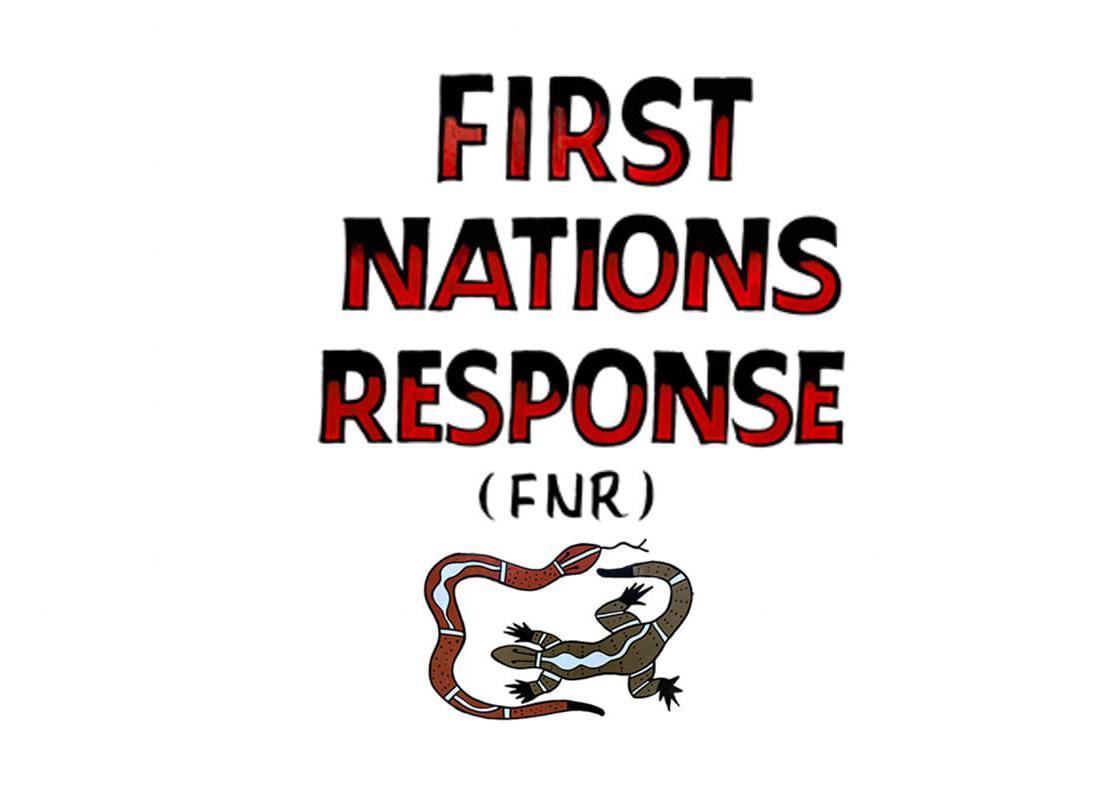
Kim: That’s why a lot of our community doesn’t utilise food services, because they’re scared that they’re going to be noted for neglect. And it happens all the time.
Coral: It happened every time our mum ever went to services for help. We;ve been picked up from school by social workers, we’ve had social workers lock us in their office to try and keep us from our mum. And it still happens today. Families who just need food are being surveilled and are being put at risk of their kids being removed.
Rand: And so when activists say things like “stop the war on Blak kids” and “no forced removals,” is this what they’re referring to?
Coral: Yep this is essentially how it starts. That’s how kids start to get surveilled at their school, while accessing doctors.
Kim: Well to be fair, it starts when our kids are born. These are structural issues.
Rand: It’s so important that there is someone like you leading this organisation who has food poverty literacy and knows what it’s like and has seen others in the community going through it, rather than someone who has no idea about any of this.
Coral: That’s a huge part of what we want to do. We want to start to build research around this. It’s easy for us to do this work, but where’s the evidence? We need to have tangible data for anyone to listen to our message.
We’re operating the Blak way in a white system. We have to document all of this stuff, and turn up with strong evidence and data. We’ve got the solutions, but we need to prove the problem.
“We’re operating the Blak way in a white system. We have to document all of this stuff, and turn up with strong evidence and data. We’ve got the solutions, but we need to prove the problem.”
Coral: We received $1.2 million in funding over three years. We got so much support from all the Blak organisations in Redfern – we had thirty-two support letters from Blak organisations to the City of Sydney saying it’d be great to have an organisation like us doing this full time.
When we got that funding from the City of Sydney, we all cried. It was huge. It meant that it’s a huge risk, but it meant that we can do this.
Kim: Well, we know it’s not a risk because we know Blak women are deadly.

Anonymous speaks to solidarity.
The land on which I write this is stolen Gadigal Land. It is not a coincidence that this land, which has provided refuge and joy for me and my family, was stolen by the same colonial system — the British — which caused my family to flee ours. I pay homage and respect to the Gadigal warriors, and I also pay respect to the Dharawal, Bidjigal and Dharug peoples whose lands I have worked, lived and organised on, and I pay respect to all First Nations peoples in the crowd today. They are my brothers, sisters, siblings, and cousins – and I am honoured to fight this fight alongside them.
“It is not a coincidence that this land, which has provided refuge and joy for me and my family, was stolen by the same colonial system - the British - which caused my family to flee ours.”
This land always was and always will be, Aboriginal land.
My land is Palestine. My home lies between the Jordanian River and the Mediterranean sea.
But Palestine has been plagued by colonialism, imperialism and supremacy. Let us get one thing straight — Israel is a racist, settler-colonial expansionist project, and no amount of greenwashing, pinkwashing, any colour-washing will ever be able to hide that.
When I hear of the issues which pervade the First Nations communities of so-called Australia, my heart aches in knowing that we are all fighting the same fight — struggling the same struggle. Since October last year, more than 34,000 Palestinians have been martyred. This is the biggest flare up of violence since the second intifada, more than twenty years ago. But the violence is not just the subjugation and genocide of my people. It’s an ongoing anti-colonial resistance, a bold refusal to accept the ongoing colonisation of our lands and we are proud of our warriors back home who continue to fight this fight.
“But Palestine has been plagued by colonialism, imperialism and supremacy.”
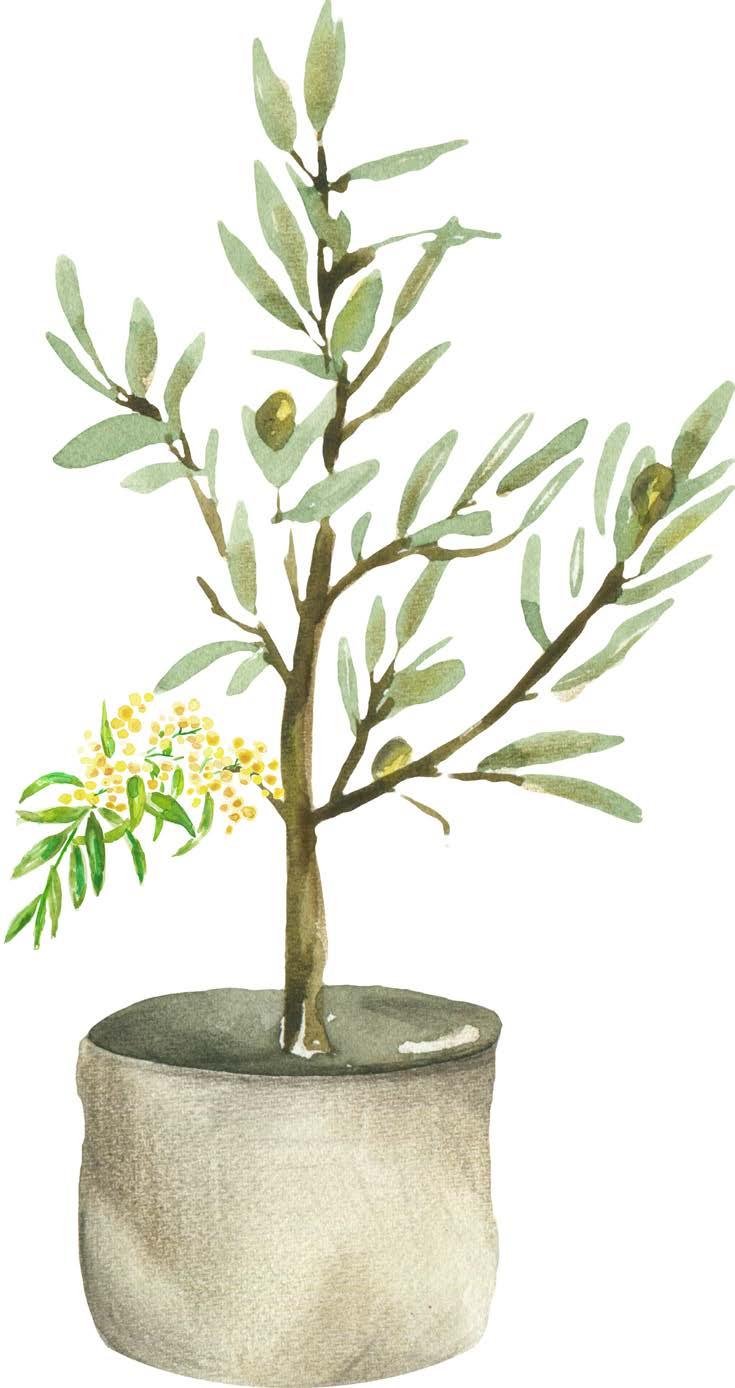
When I speak with my grandparents in Palestine I am reminded of our relationship with our land. We are أصدقاء الأرض ‘asdiqa’ al’ard (“friends of the land”). I was born in Falastin — in a small agricultural town where, for as far back as I can trace my lineage, my family,
on both sides, have come from the same small town. The earth in this town; the soil is nourished from my ancestors’ bones and those trees are my ancestors’ trees. Those birds sing the same songs that my great great great grandparents listened to while they harvested olives.


This is a relationship that colonisers will never understand. This is why, for them, uprooting trees and paving roads over culturally significant land – this does not hurt or break their hearts like it does ours. Their relationship with land is transactional and extractional — “how much money will it bring us?” and “how can we assert our domination on this part of the Earth?”
“The earth in this town; the soil is nourished from my ancestors’ bones and those trees are my ancestors’ trees.”
As the ongoing colonisation of my land, Palestine, continues, I am reminded and humbled to remember that on this land I am a guest. I am Indigenous there, but I am a settler here. I am also honoured to play the small part of solidarity and anti-colonial resistance here on Gadigal Land, where for hundreds of years the First Peoples on this continent fought the ongoing colonial project. I am inspired by my Blak brothers, sisters and siblings who have never given up the fight for sovereignty, land rights, against police brutality and for true Indigenous liberation. While we are solidarised by our experience with the settler-colonial project and the devastation, theft and violence it has inflicted upon our peoples, so too do we find comfort, motivation and the strength to continue our struggle across generations.
“We fight for land, we fight for rights and we fight for dignity and sovereignty. They fight for money, for power and to assert domination over the region.”
One thing I have learned in the BlakPalestinian solidarity space is that we really and truly share one struggle and one fight. We fight for land, we fight for rights and we fight for dignity and sovereignty. They fight for money, for power and to assert domination over the region. It is for these reasons that we, the Palestinian activist community, stand behind our First Nations siblings in our collective fight for liberation and land rights. None of us are free until all of us are free, and my freedom means nothing without your freedom.
From the river to the sea, always was always will be.

By Rand
Maybe instead of having arms if we had branches, and instead of fingers we had leaves — maybe then this godless state would find that uprooting our lives lighting entire communities on fire and disrupting thousand year old ecosystems a war crime.
But then again they already do uproot native olive trees light bushfires by planting colonial pine forests flammable, suffocating.
And if you listen to the mountains and the desert at night they call out to each other yearning for their true custodians.
The Palestinians.
By Dandoush Kafina
I would like to invite you to my home and show you around.
We can make tea together with our herbs. We will sit together, by the open sea, flatbread rising.
As we do that, we’ll make room to be nostalgic, thinking of all the times we marched forward.
I’ll show you where it’s safe to rest (and it will all be safe).
When our ceiling darkens, we can stare at the sky we all share.
The next day I’ll show you around the sand and the forest.
Everyone will greet you with open arms, saying
“Thank you, thank you, thank you – you will always be welcome here.”

By Ethan Lyons
wind clatters on old gums of the sandbanks & red dust crescendos on streambeds. this is yanggu’s orchestra (Country is singing you a song, do you hear it?) with this song, river will become a woman rising from the mist of the dry lands to become a flesh shimmering in the technicolours of the hitting sun. she will have fish swim under her skin and scales along her breasts and wrists (Country is in front of you, do you see it?) as her banks widen towards the sea a cold stream welcomes you suspending her drops in dying light for you to collect and nourish (Country gives, do you feel it?) and this song will continue singing along your fingertips and in your belly because river woman is all around us (look and see, listen and hear) when river woman returns to her orchestra, to the sandbanks and streambeds remember she is always nearby in the wetlands and hanging trees (water Country, water is life) sinking back into the water channels and leaving you with her yanggu her river song for all to hear (listen)

Dandoush Kafina gives you the choice .
[a] What you’re telling your friends it is, and what your talks are all about
[b] That cover of a magazine with pics of you in front of me
[c] You with a fist up in the air (without mentioning my name)
[d] Sipping someone else’s blood while claiming you “get it.”
[e] Someone pulling you up, and when you try to look, you can’t make out their face, and they’re gone before you can say “thank you,” and the only way you know they were there is you standing up, just right now.
Sophia
Markham muses.
“Are you a glass-half-full or half-empty kind of girl?”
Sierra hated everything about this question and all it stood for because there was no one who asked or cared what the hell to do when your glass is completely empty. Like Sierra’s glass was. Sierra would stand up at assemblies, and with a silicon smile on her face she’d deliver a proud acknowledgement to country, proudly telling her peers about her Kamilaroi ancestry, but with every word a tsunami teetered on the edge of her brain, threatening to drown out her words, thoughts and feelings, and leaving only debris in its path. It hurt. It hurt so badly. No-one understood. No one ever would.
The idea of perfection was one Sierra held close to her heart. For her, perfection was something you had to chase like a feral horse, unforgiving, a task only for the strongest, but once caught, it was something you could escape and every tear, every drop of blood, every allnighter, every crucifixion would finally become worth it. You’d finally be free. However, the reality of this concept wasn’t as tangible as Sierra first thought, which led Sierra to be in this moment, staring down her mirror as though the Devil himself was in the reflection. For her, it felt like he was. She would never be good enough, not for her teachers, not for her mum, not for her dad who was a cloud, passing over her for a short
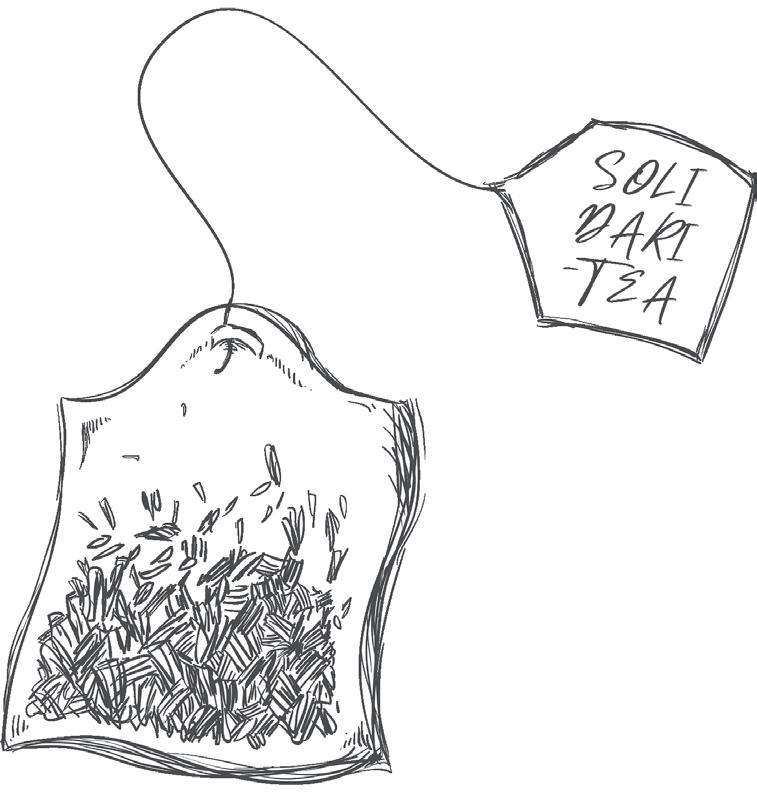
time but never changing direction for something as insignificant as her, and perhaps worst of all; she’d never be enough for her culture.
“Just look at me,” she whispered, “I don’t belong.”
She pinched aggressively at her olive skin, wondering if it was punishing her. With her father out of the picture, it meant she’d grown up in a “white” family with this “English Olive” (as her grandmother called it) skin. She never felt like she fit in with the First Nations kids at school. Of course she didn’t, when she never learnt language, or song, or dance, or even what it truly meant to be Aboriginal. The consequence of this was an eerie hollow, and a mask with so many layers, Sierra was never quite too sure how to distinguish her facade from her reality.
Discrimination.
It was a word Sierra knew far too well, a word constantly whispered but never yelled. She knew in the country she lived in, having darker skin meant being a constant subject of discrimination. So much so, people would tell she was a four-leaf clover – “white-passing.” What they didn’t know was that in high school, she wasn’t cast as the Indigenous girl in the school play because she “looked too white”, or that later that year she was forced to sit in her deputy principal’s office and explain her family’s lineage and “percentages.” It was even things
“With her father out
It was in this disconnection that Sierra’s minutes felt like days, her body hollowed out, her thoughts a rabbit warren – a place of no escape. She’d never let the mask slip, though. Aunty Tiana was the one who saw Sierra, sallowness aside. It was Aunty Tiana who first introduced her to the breathtaking world of Aboriginal dance. For Sierra, dance was a church. It gave her insight into the 60,000 years of culture that ran through her blood. It was the education that she had been denied her entire life.
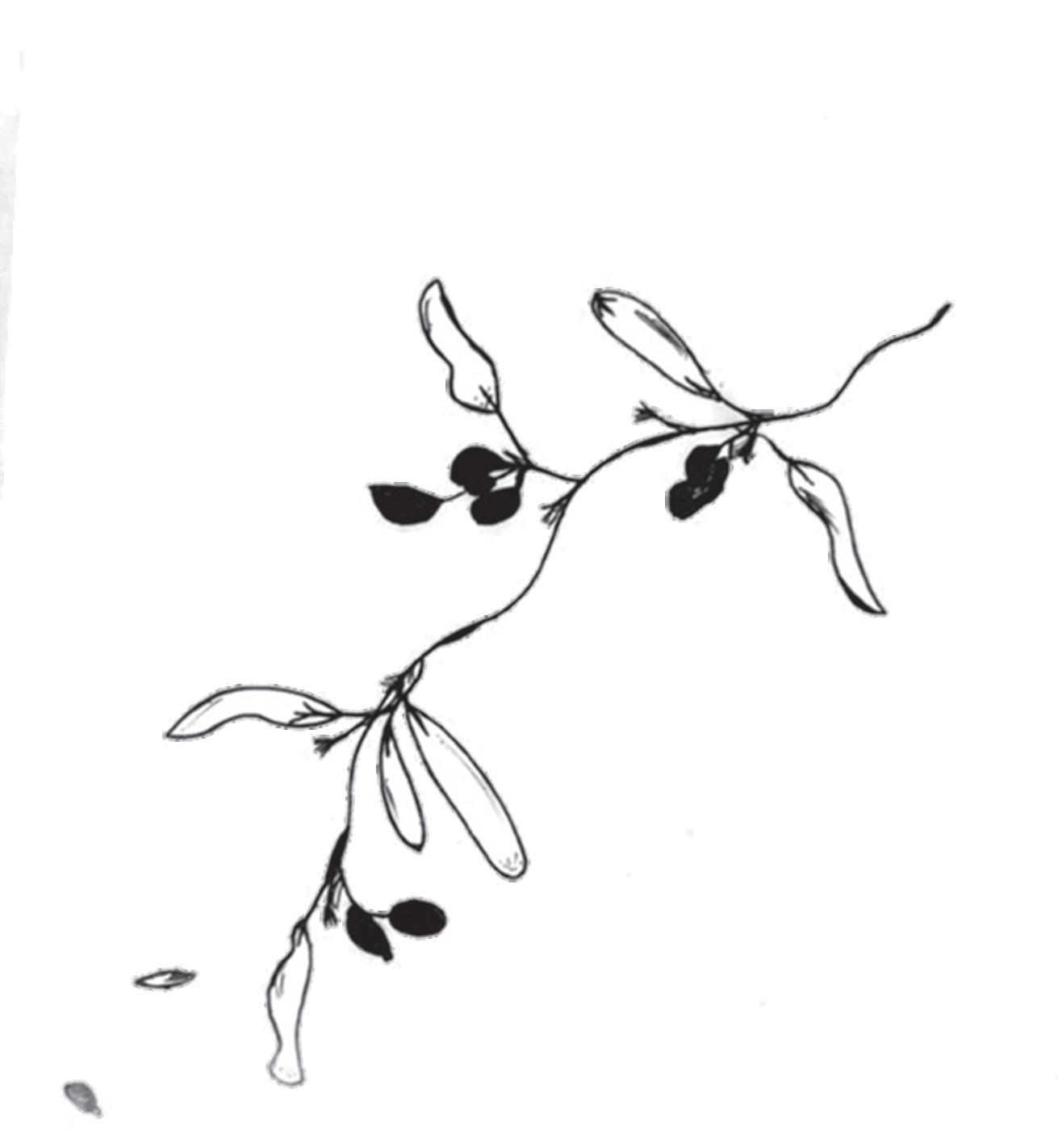

Valerie Chidiac speaks to Yumna Kassab, a teacher and writer from Western Sydney.
Valerie Chidiac: Could you describe who Yumna Kassab is, beyond her identity as an author and educator? And more importantly, why do you write in cafes?
Yumna Kassab: I was going to say Yumna Kassab is a writer from Western Sydney, but that’s a very difficult question. How did you come up with this question? Before culture, language, anything part of my identity, most of my references are literary. I do think writing is literally how I think and I interact with the world. Joan Didion says that she writes to figure out what she thinks and for me, it’s very similar. Everything’s clearer when I write what I think. Writing in cafes started many years ago when I was figuring out a process for writing. During high school and university, I would write at home in the evenings. But the cafe, it takes me out of my routine environment and I am less likely to be disturbed. It also is very stimulating without me needing to interact with others. But a good cafe for eating is a very different cafe to one for writing because the ones that are very popular don’t make good writing cafes. Also the coffee has to be good and I prefer it in a proper cup, not a takeaway cup.
VC: You wrote a book called Australiana and you have taught in regional NSW. What is something that you find overstated in the discourse about what it means to be Australian?

YK: This is a broad comment but when the shortlist for the Stella Prize was announced, it was noted that 25% of the books published in Australia are by writers who are based in regional areas. I don’t know how into crime fiction you are, but these are the books that are set in regional areas. Something I noticed living in Tamworth is that often regional communities have city people speaking on their behalf or speaking over the top of them or saying this is what suits that community. There’s a comment in Australia where some people think that the Blue Mountains is the countryside. I do think that not many people from the cities spend a lot of time in regional areas. That’s always interested me because my family are farmers in Lebanon, which is obviously in and of itself different from Australia. This was at the back of my mind when I first became a teacher, to go and live in a regional area, and that’s the thing that strikes me the most in terms of the literary depictions of regional areas. Sometimes you don’t have as many publishers based in regional areas, or the publishers themselves are based in highly urban areas, so those are the kind of narratives that they favour.
VC: Congratulations on your fourth novel Politica (2024). I had to wait in a very long queue when reserving it from my local library. Here, you delve into the complexity of relationships and family against the backdrop of war, dispossession, revolution and resistance.
YK: As someone with a very
specific background who grew up after September 11, there was a lot of vilification and dehumanising of Arabs and Muslims, which is something we need to state very openly. In terms of what we’re seeing in Palestine and across the Middle East, it’s part of a long-term and ongoing project that dehumanises and carries out great violence against a group of people with the full support of political and educational establishments who see nothing wrong with that. It’s not just the othering of a group of people, it goes beyond that. One of the things that has been a big interest for me in the last few years is Latin America; the politics and the history of that region and how there is a parallel with the Arab world. I remember having a chat with a friend from Uruguay and I asked this question, which in retrospect seemed very naive: How did you get rid of your dictators and we’re stuck with ours? Since then I’ve shifted away from that question because a very simplistic way to look at the world. One of the things that I find very interesting with Politica in particular is that I was very, very careful not to name countries and places in that book. Some people do say that it’s vague but in hindsight when I consider what’s actually happening in the Middle East and what has been happening for many decades, there’s a certain connotation in relation to Arabs and Muslims when we’re talking about resistance or prior revolutions. I wanted to avoid that and just present the story. But the characters are all Arabs, they’re all Arab names. I just wanted to allow people to make up their own minds. There are a lot of references to the geography of Lebanon, and I do think that these particular stories could actually happen only in one place in the world. When I was writing those stories — and the same with The House of Youssef (2019), Australiana (2022) and The Lovers (2022) — mentally, they’re all set in a very specific place. I do take liberties but if people do know the area and the history, they’re going to read it with an additional layer of understanding.
VC: A common pattern across your writing is this non-linear or polyphonic storytelling, where you jump forwards and backwards in time, as well as between sets of characters and perspectives before it all comes together. How did you pitch that to publishers and did you ever feel pressured to distil your style of writing?
YK: Most publishers want a linear story and it’s one of the things that keeps coming up in all literary conversations. There is this prejudice towards a story about a character, this is what happens to them and then it ends. That is the parameter of a novel. I don’t think you can actually tell the story of a community with one person.
That resonates with capitalism, to just always be focusing on the individual and not looking at how things interact. I’m always interested in terms of drawing connections and certain publishers are probably okay with this style, and others less so. I remember when I was speaking to Ultimo Press, who published Australiana, The Lovers, and Politica, I was saying if the expectation is that at some point that I’m going to sit and write this traditional and commercial linear story, it’s not really going to happen. I might still write that at some point, but I don’t think it’s likely to happen. It’s been a very cool partnership with Ultimo and also Giramondo, my first publisher. People are being trained to think linearly, but it’s probably not natural. I sometimes refer to my thoughts as an ecosystem, because I’m looking at the interconnections between things.
VC: Every Lebanese person has civil war lore or stories to tell, even if they did not live it. What do you think about the narrativisation of the civil war, and how this lack of a shared history continues to plague Lebanon?
YK: I think history is something we write. It’s almost a story that is made up and if we have enough people we go, this is what happened in history. But that’s actually not true. I was conscious of this with Politica. Obviously I’m referencing a war, but I’m also conscious because war history’s presence and legacy is still with us. To say that the war ended is a bit false, even in terms of the situation in Lebanon today, which is very dire on many fronts. It does have a relationship to history, you can’t separate it from its history. There is a reference in the book that we’re all signing declarations, we’re all shaking hands now, and we’ve butchered each other in the past, everything’s fantastic. That is fake. In terms of other countries, maybe things are peaceful, but the history is still present. Same with Australia, we’re not actually done with that. In Palestine, in terms of the future, there’s a lot of violence, all these massacres, the genocide. To actually reckon with that, you do need a very long period of peace. It’s a very long process, and there’s no textbook to follow. For Lebanon, it’s not just under the surface, it’s always there even if you’re not directly referring to it. The past has set up the present and because the past hasn’t been dealt with, neither is the situation in the present, so you can’t even deal with the past. We’re talking about a deep historical trauma at play here.
VC: You were born and raised in Parramatta and have always spoken proudly about your connection to Western Sydney. Is there a piece of fiction or nonfiction that really spoke to you?
YK: I really loved Down the Hume (2017) by Peter Polubis. It was about class and representing a way of life that hasn’t always been written about. A lot of stuff that is written about Sydney involves share houses and Bondi Beach. This book was not like that. I really loved The Magpie Wing (2021) by Max Easton
which is set in Western Sydney. He’s got this storyline about someone who wants Western Sydney to be separate from the rest of the country, as in the ‘Western Sydney separatists’ which I thought was hilarious. Sydney Review Books has a lot of good essays too.
VC: In late 2023, you were named Parramatta’s first Laureate in Literature, can you give us a sneak peek at one aspect of Parramatta you have begun exploring in your “dictionary of Parramatta”?
YK: I’ve made this list of places that I’d like to explore across this year as I write this dictionary. Sometimes if something is always there, you just assume it’s there and you’ll get to it. The other day I went to this cemetery in North Parramatta which has been there since the early 1800s. I’ve got my favourite places and I don’t tend to venture beyond them. I’ll be driving to work and every single day I’ll see the exact same group of people, at the exact same set of lights, at the exact same time. I’m trying to move away from that. But how do you even write a dictionary about a city? It’s going to be a very personal dictionary, so it’s going to be about my own memories and things that stand out for me. It could also be about books that I’ve read here.
Rapid Fire Questions:
An author whose body of work you hope to read in its entirety - Alexis Rye. She’s a treasure and I feel lucky to be alive at the same time as her.
An author that is on the rise and you are keen to follow their careerMichaela Saunders, Hussein Asghari Parramatta Eels or Western Sydney Wanderers? Western Sydney Wanderers Favourite spot in ParramattaParramatta Square and Parramatta Park Favourite place in Lebanon - Hallab (Arabic sweet place) in Tripoli
A motivational reminder for Honi readers - It is a cliche to say to people ‘do things that interest you’ but I say that to my students and I also believe it. Try to stay interested in things and to not lose hope, which I think is a bit difficult at the moment. It’s something I struggle a lot with, but there are good things in the world so keep focused on those, especially at the present time. Never has this been more true.


Valerie Chidiac joins the Department of Genuine Satire (also known as the Department of Shitfuckery).
Valerie Chidiac: You completed a PhD in history, researched settlercolonialism and published two books before shifting from academia to political satire. How would you describe the different impact you have had in those two respective areas?
Giordano Nanni: I would say dramatically different in academia. I was at the very beginning of that journey, and didn’t venture far. I did a PhD and then took a break before being in a research position for about three years. The project that I was working on was one that I devised, and which was to use theatre to bring back to life the 1881 Coranderrk inquiry. That was very public facing and it had quite an impact on the people who saw the performance as we staged it. For many years, it was here in Melbourne and then had a national tour. It also led to curriculum materials, so although I only had three years in academia, I did some good work during that time. Nothing really compared to the impact that I’ve experienced since doing YouTube. Just in terms of the range of people that I’ve been able to reach is vast. In academia you’re working through conferences, academic journals — a very select and elite part of the population. Even when we did the play, it was generally wealthier, more middle class audiences. I don’t want to stereotype but definitely still small compared to YouTube which has been more useful in terms of disseminating ideas, sparking conversations or just getting people to talk and think about certain things outside of academia. But that doesn’t cast aspersions on academia itself which is also an important avenue for debating and challenging ideas. But for someone like me who is a bit more noisy and a bit more impatient, YouTube was a better forum.
VC: Out of curiosity, would you call yourself a content creator, or is that term a bit fickle and weird?
It sounds so sterile. I never call myself a content creator. There’s something very clinical about it. It’s funny, whenever I’m on a plane and am filling in an immigration card and it says, what’s your occupation? I sometimes put historian, YouTuber, Youtube creator. There’s something about that label that indicates you’re making content for empty vessels that just need to be filled. It feels very like a sausage factory.
things. We used to have some shorthand terms for certain things and one of them was ‘the juice’ as in the essence of a problem. What is the radical solution or underlying structural explanation? When you squeeze and you get rid of all the pulp, the bits and pieces in the skin and the pips, you’re left with the juice, with what really matters. We didn’t really think about it too much. And you can’t change your name after it sticks.
VC: How does your company run? How many people and what are the roles? And is it true, are you funded by the Greens?

GN: No, we’re not funded by the Greens, that was a joke in one of my videos. We’re funded by our patrons. Most people will know it by now but Patreon is like a microfunding site where you can support creators. The business it’s very small. Essentially I do the business side of things; managing all the pages, the website. I write, research, direct, edit and publish the videos. But then there are some crucial roles that I don’t do. One of them is obviously the acting, which is we have our two regular faces of the Honest Government Ads, Ellen Burbidge & Zoë Amanda Wilson. They voice isn’t their voice in the videos, it’s that of Lucy who is my partner and wife. So it’s a family slash friends thing. We know Ellen and Zoe through friends before so it’s a group of people who are serious about activism and about the issues of the world that we live in. We have adopted a satirical vehicle which has turned into a business. We do have other people that we work with — a VFX guy, Brent Cataldo, who helps us if I need help on some videos. We also have legal advisors, and volunteer translators who translate our videos around the world. Regarding research, I’ve developed some great networks with experts in their fields like Australia Institute climate scientists, researchers in security, privacy, law reform, or climate and energy technology. It’s not a financial obligation, it’s basically sharing ideas and maximising that brain pool to make the best content that we can.
VC: What is your favourite video that you have worked on?
are not familiar with electoral politics. Our system is quite effective and we are lucky compared to elections in the US, even Canada and the UK where they have the first-past-the-post system which just feels so primitive compared to what we have — not that ours is the best. You can get even better, but ours is so much more nuanced and you can really make your vote count. Our system has been misrepresented in that if you vote one way, you’re helping the other party to win; we debunk these assumptions in that video. And I’ve really noticed a change in people’s understanding of the electoral system since we put that video out six years ago. We refer to the Coalition as the shit party and the Labor Party is the shit light party and the parties who do take serious climate action refer to them as not shit. I’ve seen that language being used on social media.
The other one that I would really like to mention is the net zero video with a very short cameo by Greta Thunberg at the end. It was a hard one to write because you can either be funny or didactic and it’s hard to be both. For some people it might be on the didactic side, but the best that I could do to really try and explain those key concepts and make it funny at the same time. We break down the concept of cumulative emissions which is the greatest threat with climate change because those emissions keep accumulating in the atmosphere. So the longer we wait to take action, the more damage we’re doing. And unless you can visualize it, it’s very hard for people to understand why delaying climate action is so stupid and and reckless. Even climatologists really struggle with that and so what I love doing is taking complicated things that are hard for people to grasp and making them a little bit easier to understand. I suppose that’s where my academic background comes in handy.
VC: As someone who made rap videos years ago do you mind explaining to our readers what “rapinvestigative journalism” entailed?
students. This is exactly where I would love to have input from younger writers because when I started doing this I was in my late twenties, early thirties, and it’s lovely to have people who are actually, going through and experiencing these struggles. Also the fact that fossil fuel companies need to be paying far more in petroleum tax than students’ HECS, there’s a wild imbalance in who we tax in this country and who is actually doing the heavy lifting. It’s all put on the shoulders of renters and young people and then after that first-home buyers and it’s a bit of a Ponzi scheme. It’s really unsustainable. Your generation is really getting fucked, like seriously badly.
VC: What would you say to students looking for a job post-graduation, and should they be interested in joining the Juice Media team?
GN: When I finished university I feel like there was still hope. I did an Arts degree, and then went on to study History. I don’t know that I would be brave enough to do that nowadays. So it all depends on what degree you’ve done. I don’t know if we’ll have much use for people who graduated in something like medicine, but definitely if you know someone who has graduated and they feel that they would like to. If they are someone who likes working in a small but motivated environment where they can potentially reach a lot of people, give us a call.
VC: What are the next goals of the Juice Media? Are you looking to expand your platform or continue building upon what you already produce?
VC: Where did the concept and name ‘the Juice Media’ come from?
GN: It goes back way back to my conversations with my high school friend Benedict Coin. He’s a human rights lawyer up in Brisbane and we used to have a lot of conversations about the state of the world and how to interpret
GN: It’s hard to pick one. If I had to pick in terms of the most important one, I’m torn between two. Top one is the Honest Government Ad that we made about preferential voting, which explains how our voting system works. It does a better job than most explanations which get complicated and technical. Obviously those are the best ones to read if you really want to understand it, but a lot of people don’t have that time. Our video has helped a lot of people who
GN: That’s the previous YouTube series that I worked on with Hugo, who was a UK-born rapper who moved to Australia and we met here in Melbourne. I’m not a rapper, so my contribution was the same as what it is now with the Honest Government Ads as a writer and researcher. I did act in that series but essentially it was an investigative news bulletin all delivered through the medium of rap. The character that we created was Robert Foster, a news anchor who would invite people from different departments like the military, politics, the media or it might be a celebrity. We impersonated everyone from Al Gore to Hillary Clinton to Julian Assange. We made this series between 2009-2015 so it really belongs to that pre-Trump era.
VC: As you were talking, I wanted to ask if you might do a video on the HECS-debt situation?
Unless it’s been completely dealt with in the budget — which I somehow doubt — it’s definitely the kind of topic that we would talk about and who better to really write about this than
GN: I’d love the idea of expanding and doing all of that, but the reality is that we have two young kids and we’re really trying to spend time with them. My children are four and six years old and I’m just very conscious of how important it is for their own growth and development that they have time with their parents as well. Instead of expanding the business, we’ve really been expanding family time as much as possible. Our challenge is to keep things going as they are. I’m not an ambitious person who wants to create a Murdoch media empire, I would just like to keep doing what we’re doing: publish a video every month which we’ve been doing for the last eight years. I was also doing a podcast and then I stopped for the last year and a bit. Basically I would do a podcast about the Honest Government Ad to interview a guest or get more into depth about a topic. I’m planning on picking up the podcast again because I really missed that. For anyone thinking of doing what we’re doing with media, politics and YouTube, it can become all-consuming. You might immerse yourself in the cycle of what’s happening in the world and then neglect your personal relationships. So for anyone in that position, I hope that you know also remember the people and things that are really important to cultivate.

Mehnaaz Hossain goes to a concert.
The theme for this year’s University of Sydney’s People of Colour (POC) Revue is “SOUNDCHECK”, with codirectors Victoria Georges and Aditya Rao putting together a brilliant mix of physical comedy, musical numbers, and videos. Georges introduces the revue by declaring it a “reclamation” of music and performance from the shackles of whiteness, and acknowledging POC pioneers in the space.
The first sketch starts with a parody of Olivia Rodrigo’s ‘Brutal’, the sudden explosion of pop-punk blasting from the speakers launching us straight into the ethos of the revue: “rock and roll was our debut, it’s made by us and sold by you”. As everyone screams “fuck, we’ve always been here” during the chorus, the theme of reclamation is evident, opening the show in a brilliant manner. The second sketch, and the first audiovisual one, is also a standout. It’s an ad for POCODOL: an antidote to the headaches of dealing with white people (“you’re so much better than that…and them”). POCODOL is not only hilarious on its own, but very cleverly used a recurring bit in the play (as a sponsorship in TV-themed sketches, and a suggested remedy in others). Another audiovisual highlight is “I’m just Kev” — featuring Kaitlyn Nguyen as the titular ‘Kev’ — a Barbie parody video which hilariously ties together many niche sydney POC

in-jokes: the cliche UNSW medicine degree, wannabe-Leb behaviour, and the infamous Asian lactose intolerance.
Many notable sketches subvert local or popular culture: “Black and Blak” turns the classic game show format on its head; two contestants (Cherrie Jeong, Moira-Kelly Cruz) battle it out spectacularly poorly, witnessed by astonished Black/Blak hosts (Peta Pyrgiotis, Taylah Cooper). Elsewhere, an absurd meeting of all the different Avatar variations pokes fun at their consistent whitewashing (Amelia Vogelsang, Apoorv Jaiswal, Jeong, Mahima Singh, Kaitlyn Nguyen, Cruz, Rubba Fatima, Samantha Saunders, Sara Chaturvedi, Shaheen Boaz, Vanessa Alexandrakis). One of the standout crowd favourites was “Cunt(y) Birth”, which ended with jaw-dropping vogueing from Kai Wang and a round of cheering and applause. Wang also shone in “Haunted Aunty House” alongside the haunted aunties themselves: Vogelsang and Luna Yuet Yee Ng.
I was particularly pleased with the sketches about Western Sydney, which can often — even by POC and Western Sydney residents themselves — be reduced to a caricature of accents, HSPs, and eshays. POC Revue’s WesternSydney-ification of “The Bear” (Amrita Vivekanandhan, Bipasha Chakraborty, Singh, Pyrgiotis, Sabine Sfeir, Chaturvedi, Boaz), set in a FootLocker
that I’m choosing to headcanon as one in Parramatta Westfields, has a great set of jokes — propelled forward hilariously by Boaz — about street style, sneakers, and specifically sambas. The only thing it’s missing is an indictment of the infectious acai trend plaguing everyone south of the Red Rooster line. Then, we have “Mean Girls: The Moosical” (Vivekanandhan, Chakraborty, Nguyen, Cruz, Sfeir, Chaturvedi), featuring the all-desi ‘Patels’; an iconic twist on a cult classic movie notably absent of any leading POC roles. The construction of this sketch was perfect. Massive props to the crew and designers for nailing the gloriously pink lighting and the scrapbook-inspired lyric slideshow. For a moment, I swear I saw the ghost of Avantika herself possess Chaturvedi, who killed the delivery of Karen’s iconic “dance break!” line.
POC revue did not shy away from talking about Israel’s genocide in Gaza, displaying a Palestinian flag atop one of the drum kits and including a sketch (“IDF Pick Me”) where a pick-me girl interviews for a job that is shockingly revealed to be for the IDF (Pyrgiotis, Wang). Wang speaks directly to the audience in loud and piercing rhetorical questions “Are you okay with occupation, apartheid, genocide, ethnic cleansing, war crimes?”. Whilst this was an undoubtedly important and well-delivered message,
many audience members felt it was misplaced within the order of the show, as its seriousness was somewhat jarringly followed by a lighthearted “Thirst Tweets” sketch. Perhaps placing it closer to the intermission, or towards the end of the revue, would give audiences time and space to process and discuss Palestine. Nevertheless, the messaging was strong and the solidarity was clear.
The band (Angel Tan, Brian Lim, Eko Bautista, Ethan Surya, Jennifer Gao, Phoenix Vanya Firdaus) plays a criminally underrated role in every revue, but were given the space to shine in this one. On top of ensuring perfectly smooth musical transitions between sketches, they had a starring role in a skit about skipping through songs (“Skip Through”), proving their musical chops by deftly switching from genre to genre.
Co-director Rao explained in an Instagram video shared in the lead-up to opening night: “We have always been here, that’s kind of our tagline for this show”. Watching it live, I can’t help but feel deeply impressed at everyone’s ability to bring this tagline to life — each piece of the show spotlights the sheer talent and enduring impact that POC have had on the performing arts, and the necessity of cultivating this inclusive atmosphere in all theatre, everywhere.
“And my father once said, A man without a homeland, will have no grave in the Earth, And he forbade me to leave.”
These are opening words to the Syrian film The Dupes (1972), written across imagery of the vast Levant desert, begging from the questions of dispossession, place, and death.
Directed by Tewfik Saleh in 1972, it was the first Arab feature film to portray the experience of Palestinian refugees through Palestinian protagonists. It was inspired by Ghassan Kanafani’s book Men in the Sun (1963). Kanafani, also was a screenwriter for the movie, contributed greatly to what he termed ‘resistance literature’, including the famous Return to Haifa (1970), before he was assassinated by the Israeli Mossad.
The film follows the stories of three Palestinian men, Marwan, Assad, and Abou Kaiss. They are all refugees in Iraq after the Nakba of 1948, trying to resettle in Kuwait in pursuit of a good job and money to support themselves and their families.
All three men are on a journey, continually, in the film. Abou Kaiss reluctantly left Palestine with his wife and child, in the hope of regaining what he had lost when his land was taken from him. We see that he is still on this pursuit, as he joins the other two men in trying to get to Kuwait for work. Assad is
a younger man, who is on the run from the Jordanian police and in search of an independent life, while Marwan is forced to search for work after his older brother and father abandon the family, leaving him to provide for his mother and younger siblings.
Each character is on their own journey, but they share a collective path. The film presents the hope of a ‘promised land’, a ‘heaven’, for which the inhabitants will live in comfort off the land. The characters wander through the arid desert landscape, a clear reference to the Abrahamic story of the Israelites wandering in the desert for forty years before reaching the Promised Land. The sun is ever-present, and the men are always looking up to her, as a keeper of time and as a symbol of hope that the Palestinian right to return will be someday fulfilled.
Uncertainty and anguish over being parted from one’s homeland is explored as Abou Kaiss is haunted by the memories of his past. “I’m not sure if I can make the journey”, he says to his wife in a flashback, before they leave through the desert for Iraq. His uncertainty, and his frequent references to death, reveal the reality of the Palestinian refugee population; many are never able to return in their lifetime.
The Dupes does not shy away from
making bold political statements and highlighting the root of the character’s struggle. In a flashback, Abou Kaiss is sitting with his wife and child,talking with an Iraqi driver, who encourages them to leave and secure a better future.
“Do you like it here? Why don’t you go there?”
“What are you waiting here for? Are you still unaware that your house and trees are lost? That you’ve lost your youth and your country”
“What did you expect?…Haven’t you got it yet, that all of this is useless?… Wouldn’t it have been better if you died?”
“Why don’t you move on? Take your things in your hand — what are you waiting for?”
The car driver’s questioning of Abou Kaiss plays in a repeated fashion, becoming increasingly louder and more forceful. It plays over images of the 1948 Nakba and still photographs of negotiations between Arab and Western leaders and the UN, critiquing the backroom politics that played a part in displacing thousands of Palestinians. The multifaceted nature of betrayal is on display; the betrayal of fathers, betrayal by people smugglers, and ultimately, the betrayal of the Palestinian people by Arab leaders.
The characters in the film speak in shaami Arabic, a dialect of the
language from the Levantine region, providing a sense of authenticity, as the viewer engages with the characters and storyline through the native language. For Arabic speakers, it offers a more intimate experience, but for those unfamiliar with the language, the subtitles are often difficult to read or are missing at certain points.
Ultimately, the film explores the individual internal conflict faced by many Palestinians following the Nakba, and the yearning for the homeland after forced removal. It is uncomfortable and challenging in that it sentences those who were forced to flee to a life of continual wandering and anguish, but beautifully portrays the reality of many first and second-generation Palestinian refugees’ struggles.
“Perhaps someday you will forgive him…but he might not be able to forgive himself” writes Marwan to his mother about his father leaving his home and family for a better life.
For many Palestinians, there was no choice but to flee, as shown in the film; their homes, trees, and livelihoods were stolen from them. Regardless, the film posits the questions: Can one ever forgive themselves for leaving their homeland?
The film was screened by the USyd School of Arabic Language and Cultures.

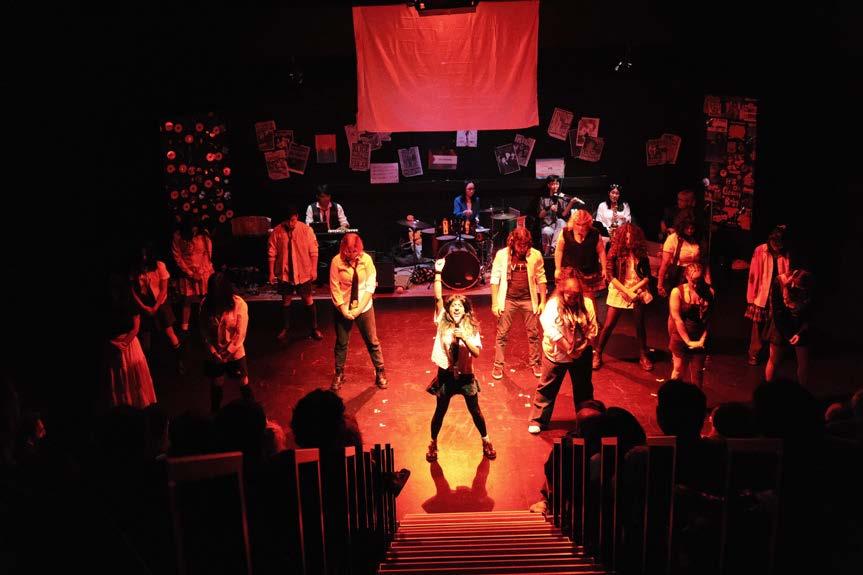

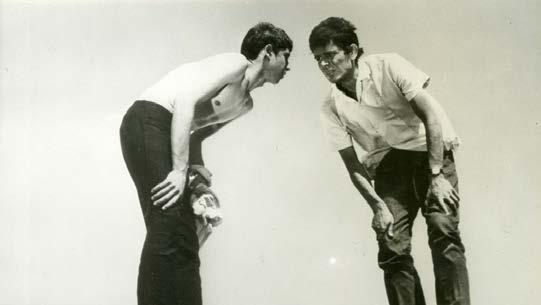
Hilary Sutanto reviews.
The show had started and I was stuck in the rain, waiting for my Uber to come. Arriving late, I rushed into the venue where the staff assured me that they’d find my chairs quickly. It was then I heard the lovely and talented star and playwright, Tommy Misa, command the attention of the room and say, “two seats are available in front”. I quietly tiptoed my way to the front, succumbing to a short-lived embarrassment. Thankfully, I only missed the first five minutes of the act and quickly became immersed in the artful one-man play.
Presented by Performance Space and the Biennale of Sydney at the White Bay Power station, Working Class Clown is a one-man show which tells the story of a queer Fa’afafine, as inspired from Misa’s own experiences. This story provided an intimate and cultural insight into the life of men who are raised as and identify as women in Samoa, as Misa played around with the stereotype of the ‘town fool’ to speak truth to power and gender dynamics of his society.
Stylistically, Working Class Clown takes inspiration from Samoan political satire and Fale Aitu, where a performer is possessed by spirits, depicting an interplay between reality, farce, and absurdity. A direct inspiration can be seen in one part of the act, where he seemingly summons his old high-school teachers in a flashback. Moreover, this inspiration seems to be the key narrative of the performance, as it was heavily inspired by his late father Mefiposeta Misa, whom Misa noted to be “the first person to make me laugh and could find the play in absolutely anything”. In a sense, the entire performance was ‘guided’ by the spirit of a clown — that is Misa’s father.
Having read the concept, I was expecting a very conceptual performance, yet it was a timeless and grounded narrative about gratitude
and living life to the fullest. Instead of a convoluted and academic commentary on the working class community, my expectations were subverted in that the story was kept personable. As such, Misa’s performance art is not exclusively catered to intellectuals and critics: it is for the people. While the performance was very experimental— with the grandeur gestures and explosive moments through the way he tells the

story, the essence, the story itself was relatable. Thus, viewers can follow the protagonist’s journey without losing their focus on the theatricality and visual storytelling.
Costuming also told a story, from the silhouette to the textiles, making it clear that the team had thought about each element thoroughly. For example, the silhouette of the denim oversized shirt and pants complimented the energetic choreography. The blouse eerily resembled the white blouse of a clown, enhanced further by denim, a textile typically associated with workers.
What made this one-man show an artistic performance was Misa’s unique ability to incorporate varied body movement and facial expressions, enhancing his stage presence and domination of the space. His body was controlled — often stiff and dynamic at the same time — as if reminding viewers that he’s only a being, controlled by
something unseen, especially highlighted in onene moment where Misa stopped, tensing and contorting his body in a position which looked marionette-like all the while strategically aligning with the lighting. This was paired with a very unique humour, allowing for the performance to ground itself as the show conveyed the everyday struggle of living. Working Class Clown is a memorable work of performance art, for both the critic and general public. There was beauty in the relatability, from the modernised costume adorning the actor’s body to the choice of humour. In short, it is funny and unapologetically queer. And just as Misa reminded us, in every “wee wee” comes a “ha ha” afterwards, and our lives would be so much better if we could find and cherish the sparks of laughter and joy within it.
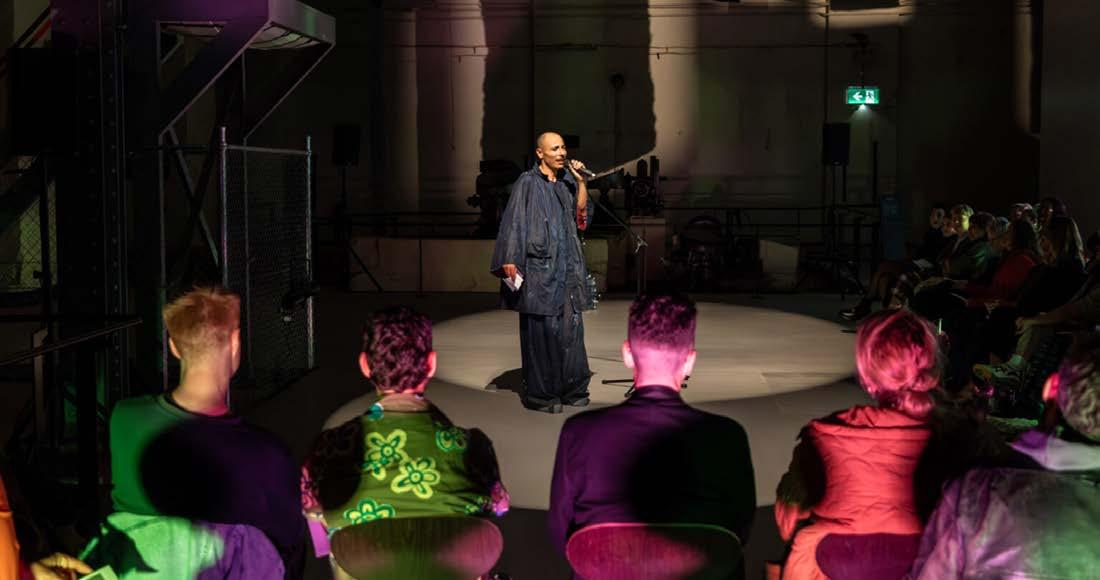

Harrison Brennan
Despite an intense week of rain the USyd Gaza Solidarity Encampment has held up spectacularly. Last week we continued to have rallies, teachins, film screenings working bee’s and a slew of other awesome activities for the people camping out. We’ve also heard of the success of other university campuses in the US and Europe where similar encampments have successfully forced university management to the table to discuss and cede to student demands, namely the disclosure of all ties to Israel and divestment from Israeli institutions. The more we fortify and build the encampment, the more of a chance we have to win our demands. We encourage all students to come down, pitch a tent, and support the encampment.
Shovan Bhattarai & Grace Street
Our Gaza Solidarity Encampment is going strong, but we need more students, staff and community to join us in putting pressure on the Uni to cut ties with Israel and weapons companies. This Sunday’s Palestine Action Group rally was monumental in bringing thousands of protestors to the Quad lawns to call out Mark Scott and the blood on his hands.

@thales_offcampus
@usyd education.action
@studentsforpalestinesydneyuni
Eliza & Rand
We’ve been at the Gaza solidarity encampment and encourage everyone to come by and join in. Free Palestine!
Cianna Walker, Taylah Cooper & Ethan Floyd
The Gaza solidarity encampment is now in its third week, and is growing every day. The First Nations Collective has maintained a presence at the camp and has been involved in organising, ensuring the encampment is a culturally-safe space that recognises and platforms First Nations voices as an integral part of global Indigenous solidarity, particularly with Palestinians.
and apartheid in Palestine. Students must stand up in the face of this injustice, just like students stood up against the Vietnam war, South African Apartheid, and the invasion of Iraq.
Kejun Liu, Zhongxuan Jiang, Fengxuan Liu & Astrid Xue
This month has been a busy and eventful time for us, the international student officers. Firstly, we have been actively advocating for the continuation of the Opal card concession, which provides discounted public transportation fares for international students. We understand the financial challenges that many international students face, and this concession plays a crucial role in making their daily commutes more affordable.
Secondly, we participated in a crucial debate meeting discussing the Opal card concession for international students. This meeting

brought together various stakeholders, including student representatives, university administrators, and government officials. We passionately voiced our concerns and highlighted the importance of this concession in promoting accessibility and inclusivity for international students.
Furthermore, we organized a highly anticipated city walk from Coogee Beach to the iconic Bondi Beach.
Moving forward, we remain steadfast in our commitment to advocating for the rights and wellbeing of international students. By addressing our weaknesses and continuously seeking feedback from the student community, we aim to enhance our efforts and create a more inclusive and supportive environment for all.
As we find ourselves in the seventh month of Israel’s current war on Gaza, we will never forget Sydney University’s complicity in the genocide. Sydney University normalises the apartheid state of Israel, partners with its institutions that work with the IDF, and contributes research towards companies like Thales.
On Day 18 of our encampment (Friday 10 May), Sydney University insidiously announced yet another scholarship with Thales. The $40 000 PhD Scholarship in Underwater Situational Awareness will use student research at our University to contribute to the target tracking, classification tools, and increased efficiency of Thales’ weaponry.
Thales collaborates with the Israeli weapons company Elbit Systems to create the Watchkeeper WK450 unmanned aerial vehicle (UAV) used RIGHT NOW by the IOF to surveil and strike Palestinians in Gaza.
Sydney Uni has deepened its partnership with Thales in the middle of our encampment demanding loudly and clearly that it sever its ties with this death mongering and parasitic company. We need everyone’s help in this fight to win our demands and get blood off Sydney University degrees.
https://linktr.ee/usydgazaencampment
Unfortunately, Sorry Business has meant that Indigenous Honi was unable to go ahead as a full edition this year. We want to thank the Honi editors for their understanding, and for adapting so quickly to ensure our contributors’ work still makes it to print. We hope you enjoy the snippets from what would have been Indigenous Honi, and we are looking forward to next year.
There will also be a National Day of Action against forced child removals on May 17, called by the Blak Caucus and supported by the SRC First Nations Collective. The Gadigal/ Sydney contingent will be rallying at Town Hall at midday.
From the river to the sea, always was always will be.
Tahlia Arnold, Lauren Finlayson, Reeyaa Agrawal & Simon Uptis
All students should actively support the Gaza Solidarity Encampment established by Students for Palestine.
Our university has partnerships worth millions of dollars with weapons Companies that facillitate Israel’s genocide in Gaza.
Our university has blood on its hands.
We demand that the university cut these ties. We also demand that the university cut all ties with Israeli academic institutions, which are instrumental in upholding occupation
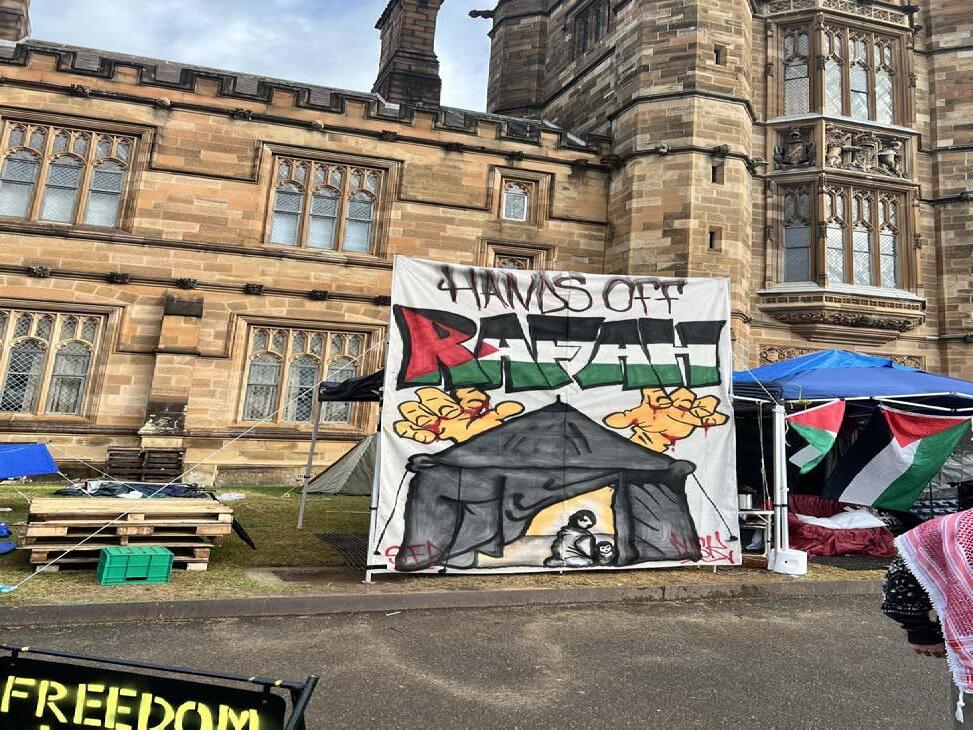


SRC Caseworker Help Q&A Discontinue Fail

Before you move in
You can maximise the likelihood of getting your bond back when you move out by doing some forward planning before you move in. Complete the condition report if you have one, noting absolutely every single dirty or broken thing in the house, and email yourself and the landlord clear photos of each of these. Whatever isn’t noted on the condition report will become your responsibility, regardless of whether you broke or dirtied it. If you don’t get a condition report, it is even more important to send those photos. Keep a receipt of any money you have paid including a bond or deposit.
During your stay
It is important to keep your landlord or agent informaed about any repairs that are required durin your stay. Email (written) your landlord about any repairs. The NSW Tenant’s Union has a factsheet (link below) outlining your rights and responsibilities around repairs. You are allowed “fair wear and tear” so don’t be scared to report things.
When you move out
You need to leave the home in the same condition, minus fair wear and tear, as when you moved in. You will not be considered as having moved out, until the landlord gets the keys back. When the landlord inspects the property, they may note damage, that was not in the incoming condition report, or cleaning that you will be responsible for paying for.
A tenant must pay the rent up to and including the day their termination notice period ends and they vacate the property.
If a tenant does not owe the landlord money at the end of their tenancy and there is no damage to the property, the bond paid at the beginning of the tenancy should be refunded in full.
If the landlord or agent believes the tenant owes money, they can make a claim against the bond.
Here are some of the main reasons that at landlord may make a claim against the tenant’s bond.
• unpaid rent
• reasonable cost of repairing damage to the property that is beyond fair wear and tear
• unpaid water usage charges, as long as the landlord requested payment within three months of receiving the bill
• any ‘break fee’ or other charges payable as a result of the tenant breaking the tenancy agreement early
• reasonable cost of cleaning any part of the property not left reasonably clean, considering how clean the property was at the start of the tenancy, and
• reasonable cost of having the locks changed, or other security devices replaced, if the tenant doesn’t return all keys and security devices they were given.
This is not a complete list. For a full list and more details, head to the Tenants Union fact sheet below.
If you believe you have not been treated fairly, contact an SRC Caseworker to find out what your options are.
Dear Abe,
My semester started really well, but then things started piling up, and I stopped submitting assessments for one of my units so I could focus on passing the others. I think I’m going to fail this unit, and I’m worried about what that means for my WAM. My friend told me it’s too late to withdraw from a unit, is that true? Is there anything I can do about this?
Snowed Under

Dear Snowed Under,
If you withdraw from the unit now your grade will be DF –Discontinue Fail. You still have to pay fees, and it will count as a fail on your transcript. This may affect your academic progression status and in a few courses will affect your Weighted Average Mark (WAM).
If you are an international student, you will need to apply for a reduced study load and provide the necessary supporting documents.
If dropping a subject makes you a part time student, it will affect your Centrelink payments, student visa status, and Opal card concession.
Abe
If you need help from an SRC Caseworker start an enquiry on our Caseworker Contact Form: bit.ly/3YxvDUf






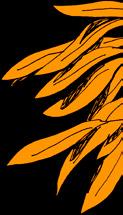

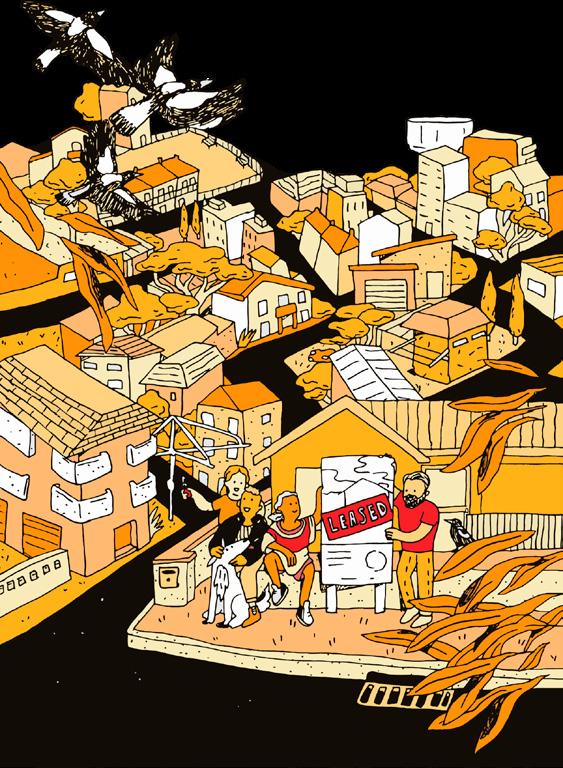
1. What date did the Red Army capture Berlin and effectively end the Second World War?
2. How many children did Queen Elizabeth II have?
3. Which Australian author wrote Toad Rage, Once, and Two Weeks with the Queen?
4. Was Basilosaurus a dinosaur, an insect, or a whale?
5. Which language do Lusophone countries speak? (Bonus point for naming three Lusophone countries).
6. What is the population of Canada?
7. Sydney Trains operates five types of train: name any three.
8. Which two brothers fronted infamous Britpop band Oasis?
9. Which heavy metal is commonly found in tuna flesh?
10. On what date did the ongoing USyd encampment begin?
K-Set. 8.

lennium,
7. Any three of the following five for one point: A-Set, B-Set (Both classed as aratahs),W -Mil
Portugal, Sao omeT and Principe, and imor-Leste.T 6. 39 million.
countries are: Angola, Brazil, Cabo erde,V Equatorial Guinea, Guinea-Bissau, Mozambique,
May 2, 1945. 2. Four. 3. Morris Gleitzman. 4. A Whale 5. Portuguese. The Lusophone
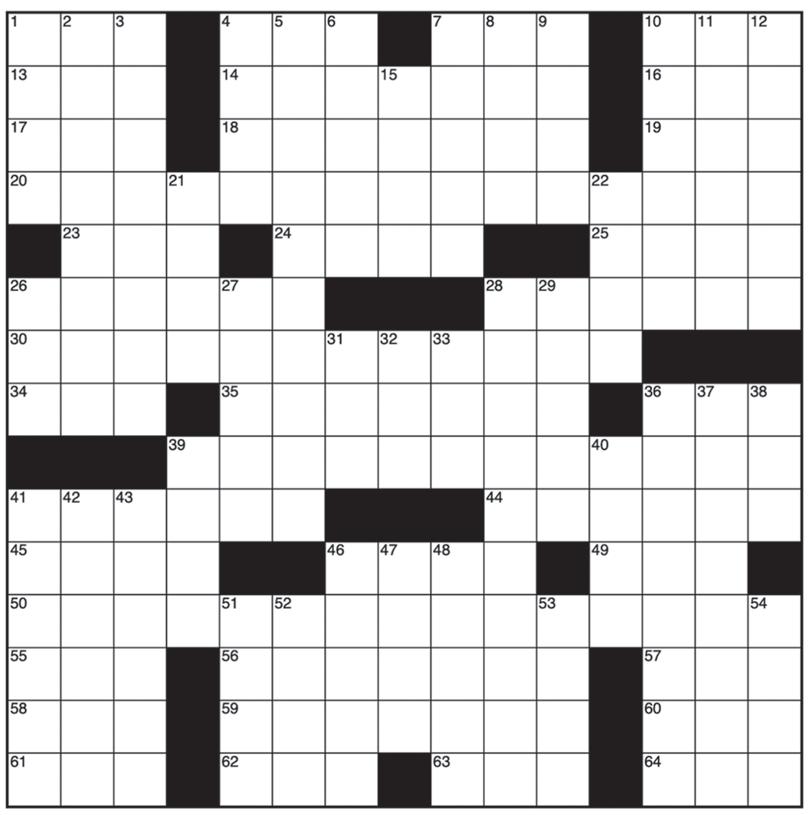
ACROSS



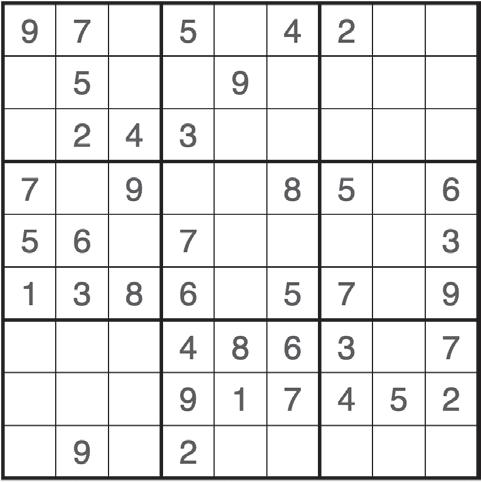

41. Let the imagination run wild
1. Anti-smoking advertisement, say, in brief
4. “___ to an African Violet”, song on 1976 Plantasia
7. Number listen on a vinyl record, in brief
10. Lout
13. Suffer
14. Sci-fi archetype that may be a real-world threat in the near future
16.
44. Risks being bleeped out
45. Common monthly expense
46. “Mi es tu __”, Spanish idiom
49. Figure pushed back by airport congestion, in brief
50. Genre for R.E.M. and Sonic Youth... or a clue to how the answers to this puzzle’s italicised clues have been changed
55. Space station from 1986-2001 whose names means “peace” in Russian
56. Like the sky as far north as Melbourne last week, due to an intense geomagnetic storm
57. Prefix for plus or binary
58. Abbr. on some street signs
59. With a fell swoop
60. Wrath
61. Word before “no evil”
62. Broadband option, in brief
63. 80s game console released as the Famicom in Japan
64. UK rap artist Central
1. Heartache sensation

2. Authorises, as a delivered package
3. __ridge, mouth, region used in pronouncing sounds like “t” and “d”
4. Many non-profits, in brief
5. Question asked by a probing doctor, say
6. Mythical entertainment award achievements only 19 people have ever attained
7. Paper units
8. Paper unit
9. ___-en-scène (stage design)
10. Heeded orders
11. Presidential runner-up of 2000 and author of “An Inconvenient Truth”
12. Intricately polyphonic compositions, in classical music
15. “Right back atcha”, in a text message
21. Effigy, e.g.
22. Character in 39-across
26. Playing card often worth either 1 or 11 points
27. Tea variety whose name comes from an Indian state
28. Extremely “bust”-y celebrity?
29. Under 31. Wizard’s artifact
32. www.honisoit.com, e.g.
33. Director Spike or Ang
36. Only using in-key notes, in music terminology
37. Genre for Weird Al Yankovic or Epic Rap Battles of History
38. Word after kick or jack
39. Scholar’s (4-move winning sequence common in beginner chessgames)
40. Make a sharp turn
41. Interpersonal conflicts
42. Be haunted by, as a bad memory
43. Culinary word which has an opposite meaning in America
46. December hymn
47. “Thanks ___!”
48. Mythological shipwreck causer
51. Plunder
52. Women with habits
53. Competitive chess rankings
54. Cap location

GROUNDBREAKING: USU BOARD MEMBER NEGLECTS RESPONSIBILITIES
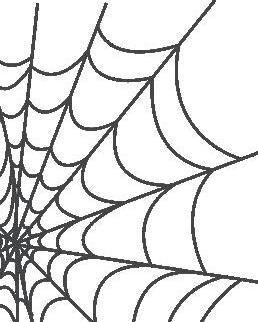
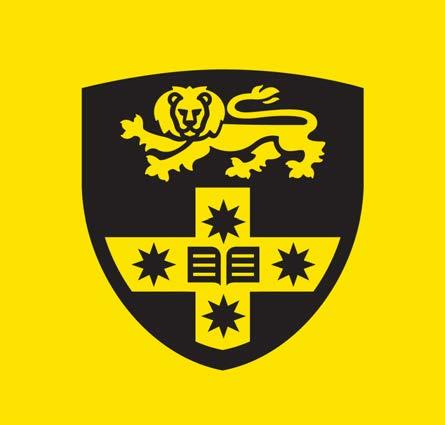




BREAKING: CONFUSED DRAFTSMAN ASKS LECTURER WHO THIS DERRIDA GUY IS, AND WHEN DO WE GET TO THE POST STRUCTURING
“JUST LIKE THE HUNGER GAMES”: MET GALA COMMENTARY REACHES NEW INTELLECTUAL HEIGHTS
EXCLUSIVE INTERVIEW WITH THE DEVIL: “OBVIOUSLY THE FLOOR PLAN FOR PURGATORY WAS INSPIRED BY BROADWAY SHOPPING CENTRE”
SALTY, SALACIOUS SENSATIONALISM
HEARTWARMING:
SELFLESS TEENAGER WHO LIVES ON FROZEN FOOD GETS MUM AN AIRFRYER FOR MOTHERS DAY
INVESTIGATION: PERMANENT 2016 ENDS, PERMANENT 2021 BEGINS
EXCLUSIVE: DOCTOR WHO COMES OUT
HANG IN THERE: THESE BDS DRAMA KIDS ARE BOYCOTTING EUROVISION AND ARE TOTALLY FINE

TRAGIC: FORMERLY COOL FRIEND BEGINS HIS HUNTER S. THOMPSON PHASE
Deep in the suburb of Glebe, an all too common turn has struck one quixotic white boy.
“I knew something was up when we met up for Ella’s birthday” tells Blake, 23, “he suggested kick-ons at ‘that pit of degeneration — the Crown’ and asked if anyone knew a guy for mescaline. It was a Tuesday.”
“When I suggested that Messina might be nice, he slammed the table and yelled ‘Jesus! Scary thoughts on this deep dark night. Get me 300 dollars in cash and the American dream!’ and attempted to run out of the bar while lighting a cigarette. He doesn’t even smoke”
“We all thought he’d lost the plot until Jess noticed he’d left behind a copy of Fear and Loathing in Las Vegas. When I saw him the next day, he was wearing these ridiculous shades and wouldn’t stop talking about ‘that ghoulish freak Haldeman.’ We’re planning an intervention for next week.
